Wool classers going full clip –
Our champions are taking on the world
Biosecurity problem-solving –
Tackling mouse and feral pig plagues

Wool classers going full clip –
Our champions are taking on the world
Biosecurity problem-solving –
Tackling mouse and feral pig plagues

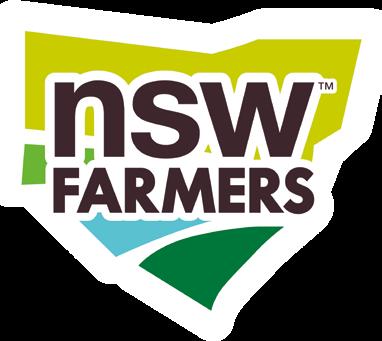
If you’re not in control of your farm data, somebody else will be.
Cattle breeders guide –
This year’s special market report
My land, my rules? –The curly question of land access
Our dairy industry getting squeezed; A slice of carbon-neutral beef; Biodiversity conservation incentives for farmers; Foot-and-mouth disease workshops; Meet the new NSW Agriculture Minister; Stemming spray drift; Solving mouse plagues

HERD
a time of consolidation and planning, way beyond simply herd rebuilding


PUBLISHER James Wells
EDITOR Jac Taylor
ART DIRECTOR Ryan Vizcarra

EDITORIAL ENQUIRIES
Jac Taylor
Email: jtaylor@intermedia.com.au
ADVERTISING
SALES DIRECTOR

Ben Payne
Email: bpayne@intermedia.com.au
Phone : 0403 893 668 –


CONTRIBUTORS
Michael Burt
Kathleen Curry
Kirsty Fisher
Susan Gough Henly
Nannette Holliday

Rachael Lenehan
Tony Lockerby
Anvil Media
Brett Naseby
Ian Neubauer
Jeanette Severs
Emily Simpson
Sue Wallace
NSW FARMERS


What a pleasure to write on this page, in my first issue as your editor� The Farmer magazine has a strong reputation as a quality read, cover to cover, so it’s a fairly big honour to take on the role – thanks for having me along.
I’ve enjoyed some top field days over the last couple of months: checking out the latest agtech, picking up on trends, and of course, meeting readers to chat about what subject matter you’d love to see in the magazine and on our website, as well as in our fortnightly email newsletter, The Muster I may or may not have updated my CWA cookbook collection too
Pretty amazing watching the NSW Farmers staff having some fantastic, in-depth conversations with all comers at these field days too� I love a chat, but I’m an amateur compared with these guys� It’s impressive seeing this kind of ‘face time’, that directly results in feedback right back to NSW Farmers HQ about what’s important to members
CEO Pete Arkle
SOCIAL & CONTENT MANAGER Michael Burt
MAGAZINE CONTENT TEAM
Alicia Harrison – Membership Service Manager
Kathy Rankin – Head of Policy & Advocacy
CONTACT US
Level 4, 154 Pacific Highway, St Leonards, NSW 2065
PO Box 459, St Leonards, NSW 1590
Head Office: 02 9478 1000
MEMBER SERVICE CENTRE
For membership, magazine subscriptions and mailing list enquiries: 1300 794 000
@NSWFarmers
THE INTERMEDIA GROUP
MANAGING DIRECTOR Simon Grover
GM OF OPERATIONS Chris Baker
FINANCE MANAGER Mina Vranistas
PRODUCTION MANAGER Jacqui Cooper
HEAD OF DIGITAL Jordan Guiao
The Farmer magazine is published for the NSW Farmers Association (ABN: 31 000 004 651) by The Intermedia Group (ABN: 94 002 583 682) 41 Bridge Rd, Glebe NSW 2037. All rights reserved. Printed by IVE Group. Getty Images were used throughout the magazine.
One persistent trend that is keeping us talking is the rise and rise of data-driven farming – or put another way, farm-driven data� That’s why we’ve started our two-part series on the subject this issue, with some thought-provoking ideas about taking control of your information and making it more of a priority to understand how the data market affects every farmer

We take a look at plenty of other important subjects this edition too, such as the sticky issues surrounding land access, the ongoing biosecurity challenges and possible solutions regarding feral pigs and mouse plagues, and ongoing conversation about spray drift and biodiversity
There’s also a lot of inspiration in these pages, especially from younger folk: from rekindling a family sheep stud at age 14, to making a name for themselves through the AgCareerStart program We also moved at a fast clip to interview our champion wool classer, fresh from competing internationally, in Edinburgh in June�
I do hope there’s something that earns this issue a spot on your kitchen table for a little while And if there is a subject or an issue you’d like to see in The Farmer in future, by all means, drop me a line and let us know –you’ll see my email just over there to the left This magazine is for you, after all�
JAC TAYLOR EditorThe Intermedia Group takes its corporate and social responsibilities seriously and is committed to reducing its impact on the environment. We continuously strive to improve our environmental performance and to initiate additional CSR based projects and activities.
As part of our company policy we ensure that the products and services used in the manufacture of this magazine are sourced from environmentally responsible suppliers.
This magazine has been printed on paper produced from sustainably sourced wood and pulp fibre and is accredited under PEFC chain of custody.
PEFC certified wood and paper products come from environmentally appropriate, socially beneficial and economically viable management of forests.
The wrapping used in the delivery process of this magazine is 100% recyclable.
DISCLAIMER: This publication is published by The Intermedia Group Pty Ltd (the “Publisher”). Materials in this publication have been created by a variety of different entities and, to the extent permitted by law, the Publisher accepts no liability for materials created by others. All materials should be considered protected by New Zealand and international intellectual property laws. Unless you are authorised by law or the copyright owner to do so, you may not copy any of the materials. The mention of a product or service, person or company in this publication does not indicate the Publisher’s endorsement. The views expressed in this publication do not necessarily represent the opinion of the Publisher, its agents, company officers or employees. Any use of the information contained in this publication is at the sole risk of the person using that information. The user should make independent enquiries as to the accuracy of the information before relying on that information. All express or implied terms, conditions, warranties, statements, assurances and representations in relation to the Publisher, its publications and its services are expressly excluded. To the extent permitted by law, the Publisher will not be liable for any damages including special, exemplary, punitive or consequential damages (including but not limited to economic loss or loss of profit or revenue or loss of opportunity) or indirect loss or damage of any kind arising in contract, tort or otherwise, even if advised of the possibility of such loss of profits or damages. While we use our best endeavours to ensure accuracy of the materials we create, to the extent permitted by law, the Publisher excludes all liability for loss resulting from any inaccuracies or false or misleading statements that may appear in this publication.
Copyright © 2023 – The Intermedia Group Pty Ltd

They tap into deep underground flows even in regions where groundwater has been notoriously difficult to locate.
They combine water mapping, geographic information system analytics and onsite survey technologies including Passive Seismic to pinpoint drill sites with expected drilling depths.
While Dorothea Mackeller’s My Country romanticises, “I love a sunburnt country, a land of sweeping plains, of ragged mountain ranges, of droughts and flooding rains”, we are constantly aware of the sobering reality of this land of extremes. It is true we have been fortunate of late with a generous amount of rainfall, although if we look back to before this brief period, we were experiencing a prolonged and severe drought.
The increase in rainfall has been welcomed although graziers and producers should remember to stay vigilant, being mindful of the fact that we are at the mercy of the unpredictable nature of our weather. Let us not be led into a false sense of security and instead be ready for the possibility of a ‘dry future’.
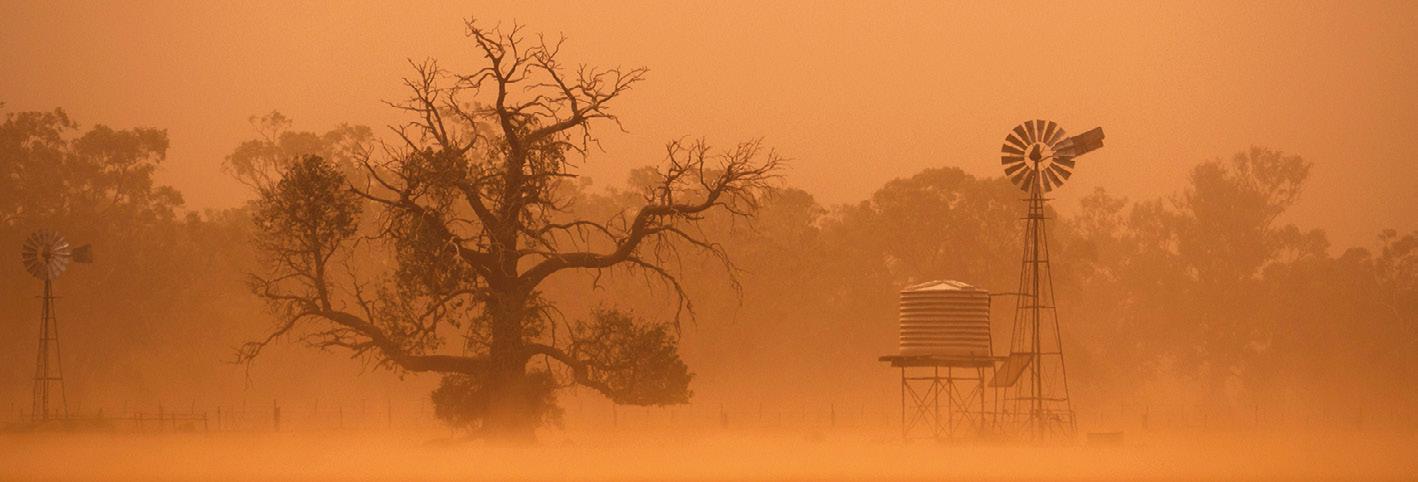
There is an answer at hand.
For the past four years, Sustainable Water Pty Ltd has unlocked water in extraordinary volume using a combination of proven science and field experience.
Sustainable Water boasts an incredible success rate in finding water at sites they have identified on land across Australia.
“I’m not talking Great Artesian Basin, I’m talking sub artesian water.”
Identifying a potential water source is just the start, according to co-founder of Sustainable Water Solutions, Jim Conley. Once located, the water needs to be properly extracted, he said, and having the correct equipment operated by a skilled team is the golden ingredient.


“Unless you have experience doing such a task and the adequate tools to pull it off, finding and extracting bore water can be a complex, costly and lengthy process.”
While we are grateful for the generous rainfall we have experienced for many months, we would benefit from a more reliable source of water, looking forward. Sustainable Water Pty Ltd are here to assist in a ‘wet future’ for farmers.
We begin with a free high-level assessment (HLA) of your property
Every Property is Unique
We analyse your properties unique characteristics; it’s surfaces, existing water resources, and its deeper geological water bearing structures and geophysical data.
The First Stage: Maps are created from airborne, satellite and on-the-ground data sets using advanced analytical technologies. Fracture trace analysis locates potential water bore sites over potential deep fractured-rock groundwater resources coming up near the surface.
The Second Stage: Our team does on-site ground surveying deploying special instruments calibrated for water search to verify and hone the results of the first stage mapping and analysis.
You get precise drilling locations physically staked on your property, and a complete Final Report with 2D and 3D data on expected drilling depths accompanying your property’s maps and bore site coordinates. Drilling: We can arrange a fully-qualified prover driller, or you can give the Final Report to your own driller. Pricing: Affordability is aided by our ability to do desktop analysis. We can usually respond with a same-day or next-day quotation depending on your water requirements, property size and property location details.
sustainablewatersolutions.com.au
It’s never too late for drought-planning, now is the time to act.
Most dairy farmers in NSW have fared better than their interstate competitors, with processors posting farmgate milk prices in June to meet a mandatory ACCC deadline.
Processors Norco and Saputo set slightly higher prices for milk in the most part in NSW, according to NSW Farmers, but the disappointing prices interstate would be unlikely to stem the continued loss of farmers from the industry
It comes on the back of a report from Dairy Australia that found more than 80 per cent of dairy farmers in NSW were impacted by floods last year – more than half of whom were severely impacted –and that climate and labour were the biggest concerns going forward�
NSW Farmers Dairy Committee Vice Chair Malcolm Holm says that it has been a tough year for the state and the increases were a good start
However, he warns a broader drop in prices from processors, coinciding with high input costs and competition for land, were making it harder for farmers to stay
in the industry, ultimately impacting on future milk production�
“We’ve seen the milk pool shrink and prices drop, and there’s a real concern that we could see a future with much less locally produced dairy products,” Malcolm says
“The weather and access to workers is part of this, but there needs to be a concerted effort from everyone in the supply chain to ensure dairying can be a profitable business into the future�
“We’re seeing increased imported dairy products such as butter and cheese on the supermarket shelves, meaning Aussie families are missing out on great local products.”
For NSW producers, dairy giant Saputo opened with slightly higher prices than last season at $11�35/kgMS, while Norco was up to about $12�22/kgMS in the north� Lactalis was down to $10�70/kgMS in the
south of the state, and $11 26/kgMS in the north – something Mr Holm says would need to rise in coming weeks
“We’re really thankful for the support shown by Aussie families over the past few years after the destructive dollar-a-litre milk debacle,” Malcolm says�
“What we need now are government policies and decisions that support – not hurt – dairy farmers, such as reversing the recent federal budget announcements of rises in heavy vehicle road charges and increased levies
“Ultimately it’s Australian families who will pay the price of these decisions – either at the checkout or through a lack of choice in the future�” l
A
Macka’s Pastoral says it has increased its soil carbon during the past 12 months by 0 54t/ha across almost 4000 hectares to achieve carbon neutrality for the Angus beef operation
More than 1200 soil samples were taken in early 2022 across Macka’s farms for testing, backed up by another 1400 soil samples earlier this year to measure total soil carbon�
Macka’s Managing Director Robert Mackenzie says the medium-sized business had increased on-farm productivity while achieving carbon neutrality using pasture improvement, variable-rate fertiliser applications, mulching and grazing management.

“We decided to start on the path to carbon neutrality when Meat & Livestock Australia (MLA), on behalf of the red meat industry, set a target to be carbon neutral by 2030,” Robert says�
“We believe we are among the first beef producers to achieve measured carbon neutrality not by purchasing offsets, but by sequestering carbon into our soils through best-practice farm management, which is incredibly exciting
“Now, more than ever before, our customers want to know where their food comes from, and that it’s sustainably and ethically produced ”
Owned and operated by four generations of the Mackenzie family at Gloucester on the State’s Mid North Coast, Macka’s runs 3500 commercial breeders and 200 seed stock breeders� The business supplies beef to both the domestic market and export markets in Asia and the Middle East�

Macka’s worked with Dr Julian Hill from Ternes Scientific and Hayden Hollis from Agricore to implement and track the carbon neutral plan
“Once all animal, land management and soil information was available, calculations were made to determine if a farming system emits more or less than it sequesters – the key indicator for carbon neutrality,” Dr Hill says�
“We have determined, using ISO 14060 best practice, that Macka’s has achieved a position where more carbon is sequestered than emitted through livestock, fertiliser or other management practices, therefore ensuring a carbon neutral position.”
family farming operation based near Gloucester is laying claim to producing carbon neutral beef without the use of offsets.Four generations of the Mackenzie family: James, Bruce, Harry, Robert and Jack.


Interest in biodiversity conservation initiatives is increasing as State and Federal governments focus on enhancing conservation objectives, and with this in mind, farmers across NSW are eager to learn more about how they may profit from the biodiversity opportunities on farm�
Under the NSW Biodiversity Offsets Scheme, there is a strong demand from developers for some types of biodiversity credits needed to offset the impacts of development projects It is important to support farmers to explore the benefits and implications of the scheme, as well as other State and Federal government policies for enhancing conservation outcomes and responding to climate change�
NSW Farmers facilitated two workshops on behalf of the Department of Planning and Environment’s Biodiversity Credits Supply Taskforce, a government body promoting the financial and environmental incentives of Biodiversity Stewardship
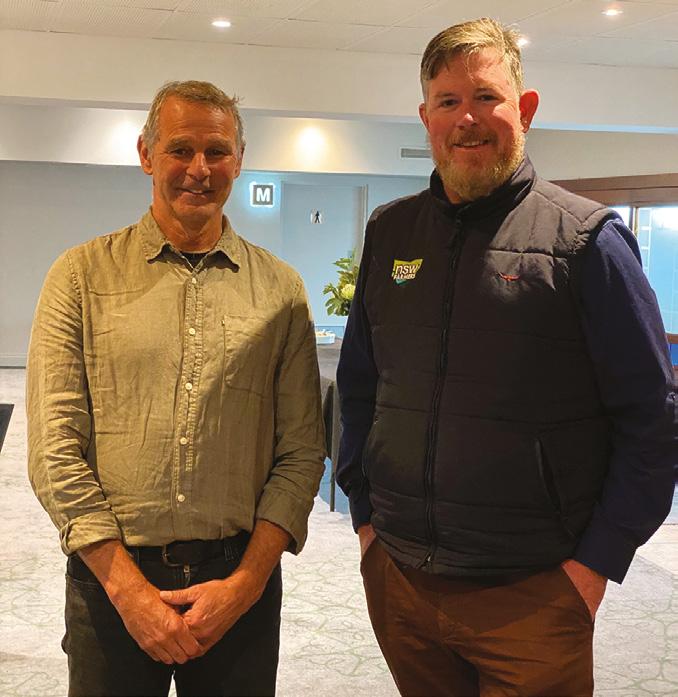

Agreements They were held in May in Wagga Wagga and Dubbo
The workshops covered the buying and selling of biodiversity credits, and outlined the financial opportunities available to farmers who take part in the scheme�
Local farmers with existing Biodiversity Stewardship Agreements spoke at both events and shared their experiences in the NSW biodiversity credits market, and in protecting native flora and fauna for future generations
“We’re focusing our efforts on helping farmers understand the opportunities that biodiversity stewardship has to offer,” says Dr Louisa Mamouney, Executive Director of the Credits Supply Taskforce�
“A lot of the farmers who attended said it was really useful and are giving serious thought to next steps Some families came along together so it’s something they could all be involved in
“We had open discussions about the issues farmers will need to consider in
creating and selling biodiversity credits in the NSW market,” she says�
Caron Chester, NSW Farmers’ Regional Services Manager agrees�
“I also received great feedback Even some [farmers] who were thinking at morning tea, that it probably wasn’t for them, were seriously considering it by the end of the workshop
“The speakers chatting with farmers and answering questions after the presentation, was also very beneficial, as questions can be on a more personal level The last farmer left an hour and a half after the event wrapped up, which is always a sign of a good event!” Caron says

NSW Farmers member Nat Barton from the state’s central west, says he found the workshop “most interesting and informative”.
“It was very well organised and provided a real insight into Biodiversity credits,” Nat says
For more information, head to www.environment.nsw.gov.au/topics/ animals-and-plants/biodiversity-offsetsscheme/generate-credits-biodiversitystewardship-agreement l

Minister for Agriculture, Tara Moriarty, recently told The Farmer that the threat of a foot-and-mouth disease outbreak is “keeping her up at night”.
It’s little wonder, with the economic impact of an F&M outbreak estimated to cost Australia $80 billion


NSW Farmers recently teamed up with Local Land Services to facilitate four footand-mouth disease workshops in Wagga Wagga, Casino, Tamworth and Dubbo

The workshops covered how to identify F&M disease and know what to do if you suspect a case; what to do on

your farm; and hearing about the work the LLS is doing to prevent emergency animal diseases and pest control
Mark Lettfuss, Principal Project Officer of the Local Land Services Foot-and-Mouth Prevention and Preparedness Program says the workshops were designed to keep the threat of F&M disease front and centre in the minds of farmers
“It’s critical farmers have the information they need to not only recognise the signs of this devastating livestock disease, but also how to put measures in place to help protect their farms from biosecurity threats,” he says�
NSW Farmers’ Regional Services Manager, Michael Collins says the Tamworth workshop provided an opportunity for both farmers and the wider community to hear up-to-date information�
“Foot-and-mouth disease has the potential to change Australian agriculture as we know it, if it ever made it into Australia,” he says
“To be able to have experts from LLS and DPI was a great opportunity for farmers� The forums also highlighted the strong relationship between NSW Farmers, the LLS and DPI�” l

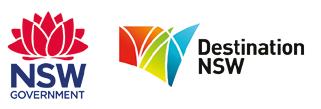
In The Farmer magazine’s first interview with the new NSW Agriculture Minister, Tara Moriarty reiterates her commitment to working with NSW Farmers and tells NSW Farmers Head of Communications Kathleen Curry her priorities for the ag sector.

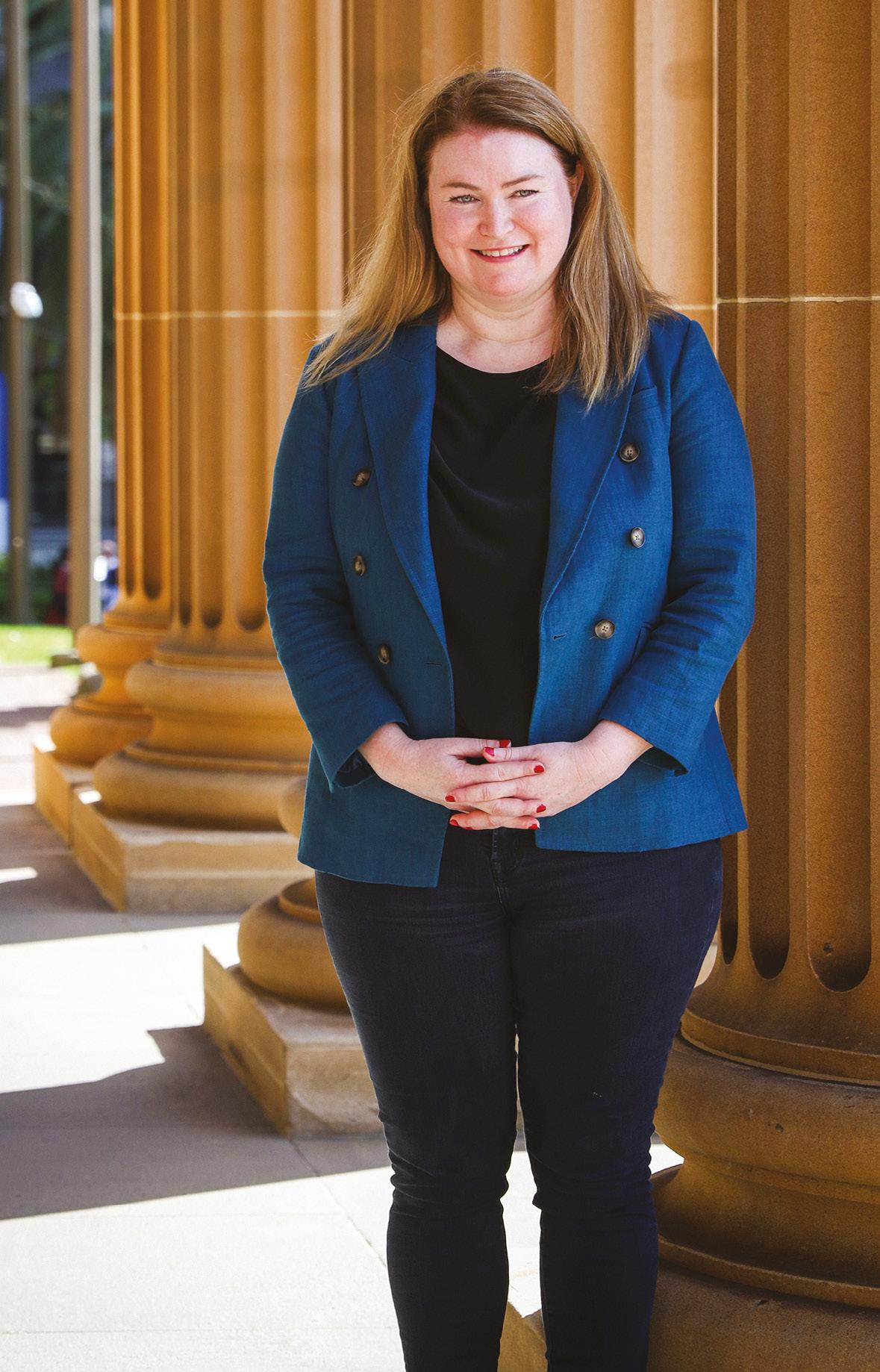
Tara Moriarty has several passions, and regional NSW is one of them�
“I’ve chosen to live in regional NSW so I’m a big advocate for making sure it can be the best it can be,” she told The Farmer in her interview in June, adding she’s “very excited” to be the new Minister for Agriculture, Regional NSW and Western NSW Minister Moriarty lives in Queanbeyan and entered the Legislative Council in 2019� Before her entry into politics, Ms Moriarty was Secretary of the Liquor and Hospitality Division of United Voice�
“I was a representative of working people in hospitality, pubs, clubs, restaurants, and it is transferable I will be an advocate for the industry and an advocate for regional NSW,” she says
“I will be fighting for the people I represent and the communities I represent, just as I have done throughout my career�”
Minister Moriarty says she’s committed to working closely with NSW Farmers’ Association, calling the association a “very strong advocacy body”�
“I think you guys are a terrific advocate for your constituents, for your communities for the industries you represent, and I will be working closely with you I have made that commitment
“NSW Farmers is literally engaging with people across ag and across regional NSW every single day� You know what’s going on and you know how farmers are feeling about different issues�”
Minister Moriarty has outlined to The Farmer her priorities as agriculture minister
“Biosecurity is one of the most important issues that we are facing, and I think that’s always the case There are some current threats that we are trying to manage our way through�
“I’m currently managing issues with varroa mite and white spot� I’m very conscious of foot-and-mouth disease� It’s already keeping me up at night – being concerned and making sure we are properly prepared if it does reach our shores ”
Bridging the gap between those in agriculture and the wider community is also high on her priority list
“I think there’s an opportunity for the broader community to be educated and reminded about where their food comes from, who producers it, how it’s produced and how it gets to the end of the aisle at Woolies,” Ms Moriarty says�
“I think that’s a missing piece and I do want to help to make sure the broader community understands how important [agriculture] is ” l
“I will be fighting for the people I represent and the communities I represent just as I have done throughout my career.”
Akey tool from the Grains Research Development Corporation (GRDC) is a new magic weather monitoring WAND that dispels a spray drift hazardous weather warning system�
WAND is a $5�5-million investment in a network of weather stations rolled out by GRDC, the Cotton Research and Development Corporation (CRDC) and Goanna Ag

The WAND network consists of 100 weather towers installed across NSW and Queensland to provide free, real-time weather data that identifies and identifies the presence or absence of hazardous temperature inversions� WAND now has more than 2000 subscribers, who can access the data via any smartphone
The towers measure several weather parameters and include novel technology that detects hazardous inversions in real time, along with offering a two-hour predictive ‘Nowcast’ function�
GRDC Manager of Chemical Regulation, Gordon Cumming says there was no way to distinguish a hazardous inversion from a non-hazardous inversion before the magic of WAND
“All inversions had to be considered hazardous and treated the same with no spraying being conducted By eliminating uncertainty, spray applicators can now make better, more informed decisions,” Gordon explains�
“WAND clearly shows when not to spray due to the presence of a hazardous inversion But importantly, it also provides clear information that shows the absence
of hazardous inversions, and that spray application may be considered ”
After analysing about 120,000 hours of observations, the WAND team determined that farmers and contractors can get across more ground in a day by monitoring the level of hazardous inversions�
Gordon says that Nowcast is a key feature of the WAND network, showing a two-hour prediction of inversion conditions.
“The network has shown that hazardous inversions set in at different times across different regions, and that this can change daily,” he says�
The Australian Pesticides and Veterinary Medicines Authority (APVMA)’s Spray Drift Management Tool (SDMT) has also been recently extended nationally to create wider access for farmers and contractors
Grain Producers Australia (GPA) applied for a national permit to increase the SDMT’s use by industry which the APVMA approved in May this year�
There are a number of new herbicides in the tool – including 2,4-D – for better determining buffer zones, based on the sprayer setup and conditions of use

NSW Farmers Ag Science Committee Chair, Alan Brown encouraged grain farmers to adopt tools like WAND and the SDMT for the busy period of broadleaf weed control in winter cereal crops�
“That is when spray drift problems can occur, because broadleaf herbicides like MCPA and 2,4-D that can impact on sensitive crops can occur,” he says
“The worst one I have ever seen is 210 hectares of faba beans that were just wiped out by a neighbour� It was not deliberate, but the result was catastrophic,” he adds�
“What it is really catastrophic for is neighbourly relations It’s much easier to avoid the problem by just avoiding spray drift.
“The main problem is a lack of awareness of the weather conditions that contribute to drift� That is where the education is needed�”
In NSW, it is illegal to use pesticides in a way that could injure people or cause damage or harm to properties, plants and animals that are not the target pest species.
Those found to have willfully or negligently caused damage, harm or injury through pesticide misuse can face fines of up to $120,000 for an individual and $250,000 for a company under the Pesticides Act 1999�
More tips on avoiding spray drift can be found at grdc.com.au/resources-andpublications/resources/spray-drift l
Grain farmers are gaining increased access to technology, advice and management tools to reduce the risk of spray drift.
Words MICHAEL BURT
Odour camouflage techniques used to protect endangered birds have proven successful in reducing the impact of a mouse plague on germinating cereal crops.
Words MICHAEL BURTSpraying paddocks with wheat germ oil confused hordes of mice and reduced crop damage in research conducted on a farm during the depths of the 2021 mouse plague
Results of the Sydney University project were published in May in Nature Sustainability, with the research team boasting results of up to a 74 per cent reduction in seed loss in the paddock�
“This research builds on work we have done in other systems to deter problem animals from finding things we don’t want them to find,” says University of Sydney Professor Peter Banks
“We have used the same logic using a bird odour to stop predators like cats finding endangered bird nests in New Zealand�”
Prof� Banks was co-author for the research project, which was led by PhD student Finn Parker� Dr Catherine Price and Jenna Bytheway, from the Sydney Institute of Agriculture and School of Life and Environmental Sciences, were also co-authors
Prof Banks admits to being fascinated by mice and has studied their foraging behaviour for almost 20 years
“I was seeing all the media reports about the mouse plague and thought there had to be a way to apply an odour technique to help farmers,” he says�
The trial was conducted in May 2021 on NSW Farmers member Peter Rayner’s farm near Pleasant Hills, where five treatments were tested across 60 plots
“Peter kindly agreed to not bait an area, even though he was getting lots of damage to his crops from the mouse plague,” says Prof� Banks� “[The trial] would not have happened without his help�”
Two of the treatments involved a solution of diluted wheat germ oil, which is a relatively inexpensive by-product of the milling process
The other three treatments were controls, with plots covered in canola oil, trampled or left untreated All control treatments performed similarly, receiving significantly more damage than treated plots�
“One of the wheat germ oil applications was done at the same time as sowing, and the other was applied a week before sowing,” Prof Banks says “We got a 63 per cent reduction in seed loss when it was applied at sowing, and 74 per cent reduction when it was applied before sowing ”
Prof Banks says wheat germ oil is ideal odour camouflage for mice�
“It’s the same stuff that the mice really want from the grain, which is the wheat germ� We figured that’s what they’d be smelling in the ground because its full of oil The idea was, if we put that same smell everywhere in the paddock, the mice would not be able to find the seeds ”
IN FULL FLIGHT
Prof. Peter Banks using a drone as part of the wheat germ oil research project (above); Wheat germ oil is ideal camouflage to confuse mice’s search for seed (right).

This simple idea does appear to confuse mice, who have been smart enough to learn to source seeds neatly along drill lines after planting “They’ve learned it from the smelling of the wheat germ in the seed,” he says “You can see all the little holes they have created to get the seeds out along the drill lines� That’s why crop damage is worst in the second week, because they have worked out where the seeds are “This concept puts the smell everywhere and they eat less of the seed, which could also mean the breeding cycle is slowed down as the mice are having less food,” he says� “Mice can’t evolve resistance to the method either because it uses the
same odour that mice rely on to find wheat seeds
“It could also present opportunities to improve the effectiveness and targeting of baiting programs ”
Prof Banks says the research project’s next phase would look at refining the most efficient application rates of the wheat germ odour for farmers to adopt�
Farmer Peter Rayner says it was exciting to be involved in the project
“Any way that works and that can help reduce the use of toxic baits during a mouse plague is a big benefit, and this method does seem to work,” he says

“Prof� Banks and the team were also clearly passionate about this sort of research.” l

“This concept puts the smell everywhere and they eat less of the seed, which could also mean the breeding cycle is slowed down as the mice are having less food.”
–PETER BANKS University of Sydney Professor
The return of the Hungerford Field Day caused an outback NSW traffic jam at the Wild Dog Fence gateway entry into the tiny border town
More than 350 farmers and other outback ag enthusiasts gathered at the Hungerford sports ground for a dose of farming innovations, fashions and fun at Australia’s most remote agricultural field day event�


Many of those attending travelled from stations in NSW, leading to traffic jams up to three cars deep at the Wild Dog Fence that makes up the state border with Queensland at Hungerford Like the gate rule on farms, the dog fence gates across the main road into Hungerford had to be closed after each entry

Exhibitors from NSW, including NSW Farmers Regional Services Managers Caron Chester and Michael Collins, added to the ‘traffic jam’ to join in the celebratory return of the biennial field day�
By all accounts, the tiny delay was well worth the wait as remote farmers revelled in their first big Hungerford gathering since 2019
The good vibes contributed to a fundraising record for the Royal Flying Doctors Service, with $34,387 amassed through a charity auction and field day entry donations�
The tiny village of Hungerford only officially has six permanent residents, but punches above its weight when to comes to hosting outback events
Most of that is thanks to the Hungerford Progress Association, which spearheads the community’s two showpiece events: the Field Day, which includes a ‘legendary’ night out at Royal Mail pub in Hungerford, and an annual Sports Day on the October long weekend�
Moc and Sheree Parker are two of the six residents and are coordinators for the Field Day event, which was held on Friday 2 June
“It would not happen without the support of the community and the Progress Association committee,” Moc says
“It is also well supported by the Bulloo Shire, the exhibitors and our sponsors�”
Moc, who does some bush poetry on the side, says the 55 exhibitors who attended this year had a genuine outback experience while having the opportunity for a rare catch-up with some of the country’s most far-flung farmers
He says accommodation options are limited in Hungerford, with most exhibitors and visitors enjoying a campout at the Ross Wallace Sports Ground
“The caravan park and the pub do have some accommodation, but we had about 60 of the exhibitors camping out at the sports ground�
“There is a great night out at the Royal Mail Hotel the night before, and another night of live entertainment on the Friday around an outback fireplace ”
The Royal Flying Doctors Service (RFDS) has received hundreds of thousands of dollars from the Hungerford Field Day since its inception in 1982�
All proceeds from the Hungerford Field Day are donated to the RFDS, which is a vital, well-loved and respected medical service for outback communities such as Hungerford and its surrounds
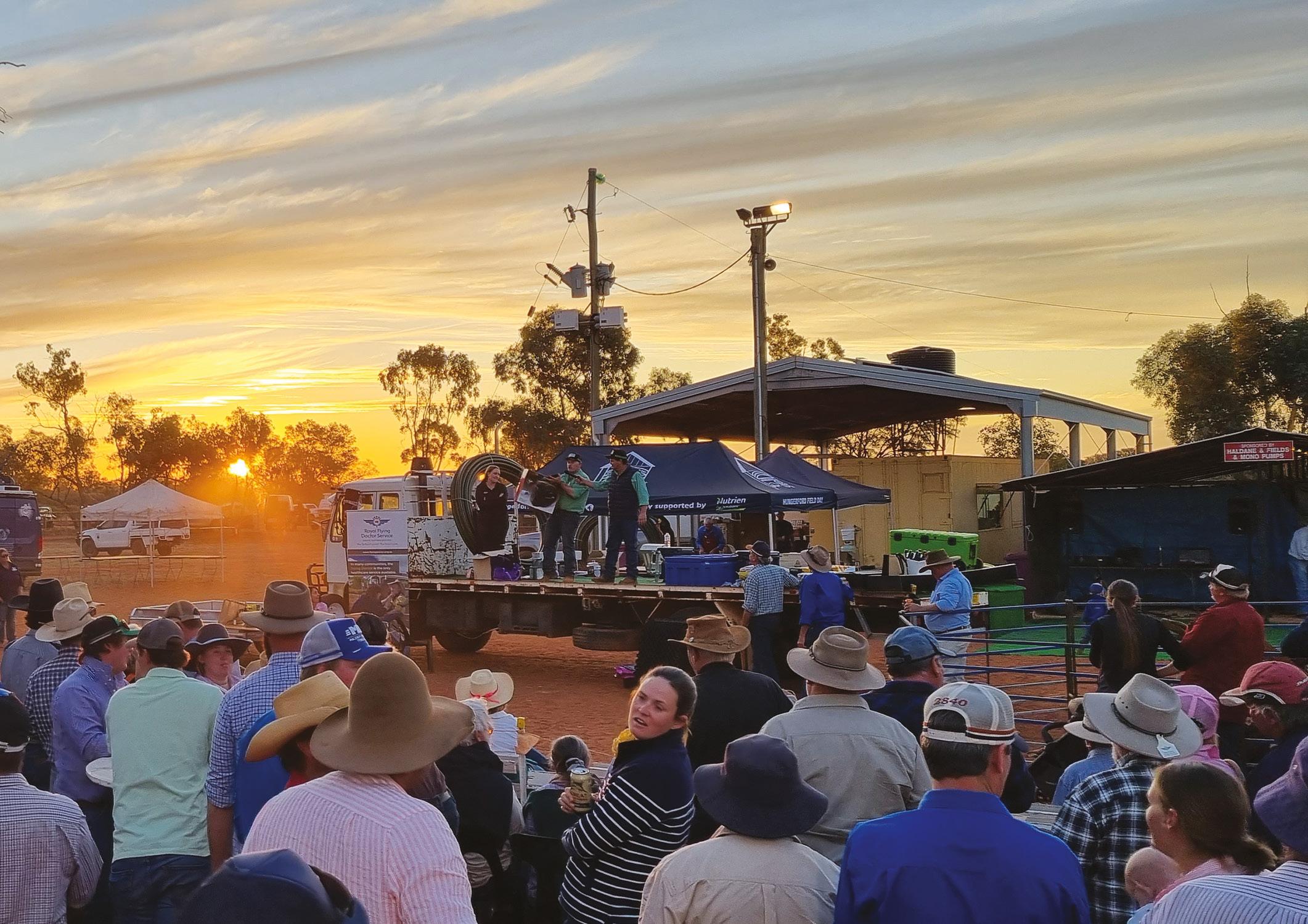
The idea to host an enlightening event for farmers and raise funds for the RFDS was the brainchild of Margaret Dunk, who was part of a 99-year Dunk family farming legacy at Warroo Station on the outskirts of Hungerford
Margaret and husband Peter transformed the idea into reality in 1982 and it soon became a much-anticipated annual event for the outback region�
“Mum ran the first event, and it was a wonderful show She continued to run it for the next 21 years,” says Margaret’s son John Dunk
“It was a small start, but it’s grown from strength to strength We’ve had all sorts of exhibitors over the years, from bulls to workings dogs, farming equipment and tools, and nowadays there is more clothing and artists as well�
“I was at the Progress Association meeting when it was first talked about The reasons behind having a field day
The charity auction raised almost $29,000 alone, and combined with entry donations to garner nearly $35,000.
were that farmers out here can be the last to find anything out about new technology and machinery ”
The event has now become biennial to accommodate for a field day run in concurrent years at nearby Louth, a mere 260-kilometre drive south of Hungerford
“We take it turns with Louth,” says John� “There is no point in competing against each other out here�
“Most importantly, it’s a day for everyone to get together and support the Royal Flying Doctors It truly is a wonderful service that they provide out here
“The night before is legendary now The hotel does a camp oven dinner, and most people bring a swag and camp there� It’s a really important social event for the community and farmers�
“There are not many people out here, but it’s a wonderful district ”
The next Hungerford Field Day will be in June 2025 l
Fresh from being crowned the best Australian Town of the Year, Albury is flying high.
–Words SUE WALLACE

This vibrant city that sits on the meandering Murray River dividing NSW and Victoria, Albury has long occupied this river crossing location on the traditional land of the Wiradjuri people, with sister city Wodonga within sight on the opposite, Victorian bank of the river.
Home to 57,000 people, Albury is surrounded by rich farming land and is known for its buoyant art scene, great outdoor adventures and innovative food and wine offerings
According to the Albury District Historical Society records, Albury was first recognised as a port in 1856 with steamers including the Albury, Lady Augusta, Gundagai, Corowa and the Cumberoona plying the waters and bringing goods, produce and people to the developing town By the 19th century Albury was a market for wheat, wool and wine
Today the mighty Murray remains the lifeblood of the city, although the more modern way to reach Albury is via the country’s busiest highway; many people have tales and memories about an overnight stop on road trips between Sydney and Melbourne
It’s a summertime ritual to float down the river and, no matter how much the temperatures climb, the water is always ‘fresh’ and clear, and often takes your breath away� Kayaking and canoeing are popular, with the elusive giant Murray cod drawing plenty of fisherfolk too
Popular Noreuil Park is home to the new $6 49-million Albury Riverside Precinct that includes a walking and cycling path, floating docks, pathways and a barbecue area�
Albury mayor, Cr Kylie King says the project has transformed the iconic Murray River and the heart of the CBD
“Whether it be sitting by the river with a coffee, getting out for a walk or ride, attending a community event, or sightseeing along the Murray for the first time – it’s fabulous,” she says�
The Albury Hume Weir, a 15-minute drive from the CBD, is another favourite spot for locals and visitors� It took 17 years to build between 1919 to 1936, and holds more than six times the volume of Sydney Harbour This
massive aquatic wonderland is ideal for boating, paddleboarding, fishing and water-skiing; a walk over the dam wall offers up great opportunities for photos.
A short 10-minute drive west of Albury brings you to the Wonga Wetlands This ecosystem of manmade lagoons and billabongs is unsurprisingly a birdwatcher’s paradise, with six bird hides and more than 155 identified species�

The Yindyamarra Sculpture Walk is another picturesque five-kilometre trail showcasing 11 significant contemporary works created by local Aboriginal artists including the Bogong Moth Migration and Maya fish trap sculptures, and carved totems telling traditional stories unique to the local mob.
Albury has now been named the 2023 Aussie Town of the Year by popular travel app Wotif, and it’s become a magnet for short getaways and weekend breaks� Glen Robinson, general manager of Albury Business Connect, which has 388 members, says business owners are optimistic after a tough time and are looking for new opportunities
“It’s been a real boost being named number one destination spot in Australia � This city has so much going for it and, although it may take 12 months to pick up, I think it will and is already reflected in tourism growth,” he says
“Albury is a great place for families, couples, retirees and singles – it’s also an easy place to live where you don’t have to worry about traffic Housing is more affordable than the city, and there’s work available�”
Glen says Albury has a very supportive community, with everything needed by residents, such as excellent educational and medical facilities
Over at 588 Dean Street, hospitality leaders and owners of the micro-hotel chain CIRCA, Ririn and Kevin Yaxley took on the challenges of renovating the city’s Art Deco Commonwealth Bank building from the basement to the ceiling in 2019 � Along the way they discovered an original terrazzo staircase hidden under layers of carpet and linoleum >
“Taking an old building and bringing it up to today’s standards is tricky� It costs a lot of money because it is a change of purpose, but we had confidence it would work well,” Ririn says � The hotel offers three immaculately restored suites and studios with a contemporary feel including the Hart Suite, named after Australian artist Pro Hart; the Warhol Suite, a tribute to Pop Art superstar Andy Warhol; and the Diddley Studio after the American rock’n’roll guitarist Bo Diddley There’s also a day spa and art gallery.
ART AND SOUL
A quick wander up the main street leads to the eclectic Murray Art Museum Albury – known as MAMA – which showcases an exciting photography collection, as well as touring and local exhibitions It’s located in the
Positioned ideally where people cross the river by car or boat, or even cross the country on the motorway or by train, Albury is a kind of ‘gathering place’ of art and innovation.



former Albury Town Hall, renovated in 2015 Acting director Michael Moran says the art museum is an incredible asset for Albury�
“There is very little like it in regional Australia, offering new and contemporary exhibitions and a place of education for families with a great children’s gallery and activities,” he says
Upcoming exhibitions include the work of Newell Harry, an Australian-born artist of South African and Mauritian descent, from 28 July to 26 November this year.
In another show of confidence in the city and its arts culture, Albury art lover Jacinta Mirams opened her own private gallery, Art Partners Australia, in 2016� Her exhibitions have included works by Terry Batt, Peter Caddy, Robert Klein-Boonschate and Lorraine Connelly-Northey
The gallery, located at 488 David Street, holds regular workshops and stocks fine art supplies�
“It’s particularly rewarding to see regional artists showcase their work in a gallery with a city environment and to see the workshops being well supported,” Jacinta says
“The gallery offers regular exhibitions that evoke emotions and challenge as well as intrigue and entertain ”
Albury is also set to get a new creative space, thanks to Council plans to renovate an old disused pumphouse near the Murray on the outskirts of Albury, which has been awarded a $2.9-million contract.
Over the years, the city has seen many circus performers graduate from the Flying Fruit Fly Circus, the Australian national youth circus The Hothouse Theatre also presents thought-provoking original productions in the historic butter factory theatre on the Causeway between the twin cities�
The surrounding rich food bowl provides year-round fresh produce to hatted restaurants and the popular local farmer’s market, held every Saturday morning Throughout the city, there is plenty of choice for places to dine
River Deck Cafe, located in a beautiful setting at Noreuil Park and surrounded by huge shade trees, has been taken over by new owners Tom and Emilly Cencic, who are excited about bringing great food to the people of Albury in such picturesque surrounds Bistro Selle, Canvas at MAMA art museum, Level One Restaurant and Wine Bar, and Yardbird, all champion excellent casual dining; Ebden & Olive tempts with meals and picnic additions and, next door, Nord Bakery makes delicious Scandi bread and pastries�
In a first for Albury, regenerative farmer Jake Wolki opened his 24/7 self-service retail butchery at Lavington Customers can famously only become members after doing a free farm tour to learn about where the food comes from
“We want customers to understand our values and our ethos and what we’re trying to achieve - it lets people buy into our mission,” says Jake�
As a thriving place to visit, live and work, Albury is no longer just a place to cross the river – it’s a place to linger�

Glen Robinson, general manager of Albury Business Connect says it didn’t take him long to return to Albury a second time to make his home here
“It’s an excellent place to live, with career opportunities and jobs available if you are looking for work,” he says�
“Albury is well serviced and it’s great to see the local TAFE is bringing back tourism training and courses I can see why it was named the number on tourism destination in Australia ” l
“Whether it be sitting by the river with a coffee, getting out for a walk or ride, attending a community event, or sightseeing along the Murray for the first time – it’s fabulous.”
–KYLIE KING Albury Mayor

Growing up on a 400,000-acre sheep and cattle station in the northern Flinders Ranges in South Australia, a young John Fargher watched the business side of the family farm being run on the power of a pencil and a paper notebook, “which as often as not, ended up going through the washing machine or at the bottom of a trough,” he says “I think everyone’s familiar with that scenario ”
Now one of the co-founders of farm and livestock management platform Agriwebb, speaking at a recent NSW Farm Writers event in Sydney, John remembers when swapping the sodden, old notebook for better technology wasn’t quite as simple as downloading an app “For me, when I was growing up on our station, I thought, ‘surely there’s got to be a better way of doing this’,” he says
“I actually looked for some software to run our business� We found some, we bought some, probably 20 odd years ago, and it came on a floppy disk and stayed that way in the top drawer of the office� That was ultimately my experience with trying to get into software and technology as a whole
“When we started the journey back in 2014-2015, we used to cite a stat that 95 per cent of farmers were still honestly running their business out of pencil and paper and there was very little digital adoption,” says John� “That has shifted dramatically�
“We ran a global survey of farmers and found that over 15 per cent of farmers believe now that data and technology are critical to their business, and critical to the industry to move forward.

“The proof is in the pudding now Agriwebb is one vendor out there, and we have more than 25 per cent of the animals in Australia on the
platform, so that would indicate that at least 25 per cent of the industry has digitised� We’ve come a long way in that journey�
“When we started in 2015, we would hear, ‘I’m scared of the cloud� Don’t put my information in the cloud’ and we would answer, ‘Do you have a bank account? Well, you’re in the cloud Sorry!’ So that conversation has finished
The situation is rapidly changing, as such global technology as geospatial monitoring, community and resource mapping, and all-around improved connectivity, combine to remove the last scraps of analogue life from primary production�
John has seen the conversation now to have shifted toward more sophisticated questions about data privacy and security – who owns it, and where it’s being shared
“Software and technology companies spend a lot of effort and time making sure that we are securing that information� The farmer owns the data� I think you’ll get that same comment from anyone that’s legitimate in the industry because if they weren’t, they wouldn’t be in the industry because they wouldn’t have customers ”
Simply put, the new global landscape of digitised business, wrapped up with the need to track emissions and trace livestock in a more exacting way, means that data is no longer simply the information that helps to run a farm more efficiently on a singular scale� Data is the product itself – and several industry voices now agree that if you are not collecting and using your data, others may do it instead
Andrew ‘Wardy’ Ward is one of these voices As an agriclimate specialist at the democratically >
ANDREW WARD Regen Farmers Mutual“And so you’re a participant whether you want to be or not. The question becomes: are you a proactive participant in the collection, analysis and sharing of your data? Or are you going to have it happen to you? If you decide that you’re an active participant, have you got the agency, or are you subcontracting that data to your vendor collection platform?” –
farmer-owned Regen Farmers Mutual, Andrew has a responsibility to provide market-based advice to the mutual’s members, from the farmer’s perspective that effectively gives them the digital tools to collect, analyse and share their data�

“In my world, a lot of data relates to a carbon market project, so I’m going to use the high levels of confusion and low levels of engagement with carbon markets as a proxy for data,” he says “In terms of how data can inform autonomous tractors or rain gauges remotely – I’m not an expert in that But I do know that a lot of farmers are very anxious about carbon markets, which are data markets�
“Some might not want to participate to collect and share data but what they’re failing to understand is that the banks have decided that the equivalent of their customers’ Scope 3 emissions, and supply chains – whether these are domiciled in Australia, Singapore, the US, or Europe – they’ve decided that their emissions are the sum of their supply shed
“They’re looking at farmers saying, ‘Ah, some of you are just not getting this� You’ve got technical barriers� We might just be better off instead asking you for permission and assistance to collect this data, to use these fancy multispectral satellites to collect that data on your behalf, and then we will understand the emissions of your supply shed And hey, if you’re
Andrew Ward from Regen Farmers Mutual, on farm (above); Pip Grant (far right) speaking at the recent NSW Farm Writers event discussing data. Photo credit (far right): Anvil Media.
selling us beef, wheat, or wool, or whatever the commodity is, you can still sell that to us, but we’re also going to take the cost of offsetting your emissions into account�’
“That will be the real risk for farmers� If they withdraw from the data markets, if they withdraw from the carbon markets� If they put their head in the sand, it doesn’t mean that they’re withdrawing their participation from the broader economy, because there’s not a farmer who doesn’t sell into wholesale supply chains or have a mortgage
“And so you’re a participant whether you want to be or not� The question becomes: are you a proactive participant in the collection, analysis and sharing of your data? Or are you going to have it happen to you? If you decide that you’re an active participant, have you got the agency, or are you subcontracting that data to your vendor collection platform?”
Pip Grant, Director of the Australian Grower Extension and Adoption sector of biotechnology organisation Loam Bio, has said more than once in the past that the growing need for farm data to address Scope 3 emissions cannot be emphasised enough, in order to achieve Net Zero These days, she is on the frontline and in a prime position to gauge sentiment among the farming community on the subject
“My day-to-day job is sitting down with farmers at their kitchen table and selling them a carbon project, which is a 25-year commitment that involves us, a heap of sharing of data and the government statutory authority,” she says� “After about 150 conversations, I’ve never had a farmer say ‘Oh, who’s going to get my data there?’
“The sharing of the data is not a challenge What they want to be explained is how is that data monetised ‘How do I build carbon in a cropping system?’ I think the data-sharing conversation keeps coming up [in the wider community], but I wouldn’t want anyone saying that barriers to our farmers becoming more sustainable in a way that we can see, in a digital platform, is because they don’t want to share their data ”
Loam Bio’s overarching mission is, to quote their marketing material, to “use the world’s
“The way I view this is that a farmer needs to digitalise their business to be successful in any challenge or opportunity they face now.”
–JOHN FARGHER Agriwebb
smallest organisms to solve the world’s biggest problems”� Their project to tackle the climate crisis by better understanding how soil-borne microbes influence the carbon cycle, and creating new carbon sequestration opportunities, all hinges on the secondmost important ingredient after those little microbes – and that’s data So Pip isn’t backwards in coming forwards about how farmers sharing their data directly leads to research that is set to improve agricultural productivity long-term�
“It’s understanding the mechanisms of building soil carbon, monetising it, and trading it� And everyone’s learning together� These are 40-page contracts that we’re sitting down with alongside farmers, and there are clauses in there that say, ‘we need this data from you, in order to do your GHG baseline, to keep you compliant with the ERF regulatory system’ Of all the clauses in the contract, not one conversation has been around ‘what is going to happen to my data’ or ‘why do you need it?’�
“I want all of your data� I want everyone’s data, because that’s when it becomes knowledge� And I don’t want it for nefarious reasons I’m not going to sell it to John Deere’s marketing department and do some machine learning on exactly what archetype you can sell a million-dollar piece of equipment to I come from an R&D background We want to make exponential breakthroughs in on-farm efficiencies�” >


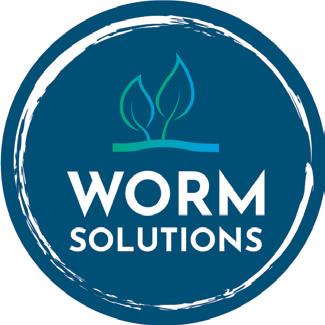
Highlighting the importance of creating healthy soils and sustainable practices in and around the farm and garden.
We can provide you the following healthy/natural alternatives.
• Premium worm juice BIO stimulant… very high in microbial life capable of activating and unlocking the nutrients in your soil. Starting from 5L right through to 1000L pods and beyond. (Typical Analysis and Laboratory results on our website).
• 1000L Worm Factory Kits…. So you can produce your very own liquid
GOLD BIO stimulant, pure worm castings and breeding of worms.
• Commercial size IN GROUND concrete worm bunkers… Complete with in ground juice storage tanks and option for added storage above ground. Ranging from 50m2 right through the 200m2 and beyond.
• BULK composting and fishing bait worms at exceptional prices and delivered fresh.
Whether you are a small or large scale farmer looking to improve your soil and pastures, Worm Solutions has you covered when it comes to the highest level of service coupled with innovative products that are sure to change your thinking and way of life.


“Worm Solutions creating solutions NOT chemicals”
“Jason’s knowledge and enthusiasm is why we have chosen to go down this path, we are excited to see where the future is going to take us with Worm Solutions.”
Dunnield Border Leicester Stud Trangie NSW
John Fargher adds: “The way I view this is that a farmer needs to digitalise their business to be successful in any challenge or opportunity they face now� I honestly believe that, because I wouldn’t do what I’ve been doing for the last 10 years otherwise; this is around productivity, efficiency, and growth� It is about financing and it is around the supply chain
“What we’re seeing now is something that we’ve never experienced before and maybe we won’t see that again in our lifetimes The freight train that’s coming towards us is around corporations now needing to report on Scope 3 emissions�
“Just to provide some context for that, we’re now seeing food supply chain participants – McDonald’s, banks, financial institutions that have made certain commitments such as shareholder and board members regulatory amendments saying, ‘Hey, we’ve said we are going to be Net Zero by 2050 and reduce our emissions by 30 per cent by 2030 ’
“That’s not much time That’s six to seven carbon seasons away� Scope 1 and Scope 2 are within their control largely because Scope 3 is at the start of that supply chain�
“If you look at McDonald’s, for example, they have never had to get that close to a farmer ever before They’ve always talked about animal health and welfare and they probably believe that, considering that they’ve never had to activate and engage a farmer They are the biggest consumer of beef globally� To satisfy science-based, Scope 3 emission targets, they have to report on-farm data�

“That is a market access issue because we will see a scenario where there could be this Mexican standoff, where the supply chain says, ‘Hey, we’re not going to buy from you unless you provide data that solve my Scope 3 emissions’ and the farmer may
sit back and say, ‘well, I’m just not going to lie to you because I think you’re rinsing me’
“We’re seeing it in supply chains, where farmers are consenting to provide data in a supply chain, and they are getting a premium� They’re not only getting a premium for their product delivery, but they’re getting paid to enter quality data� That’s how important it is and that’s how we can get real value back to the farmer
“I think data is nothing new,” John adds “We’ve been collecting it for a long time, whether that is in a notebook or written on the dashboard of the ute The important thing is to make sure it’s in a very useful format� There’s always a big misconception where farmers ask: isn’t my data so valuable? Yes, it is, but it’s got to be of good quality, in the right environment, and then delivered to the right participants to have value We need to be having the right conversation around what is valuable and what isn’t
“We’re now in a world where we can collaborate, communicate and share data of high quality in a useful, regular format that can then ultimately add value back to the farmer and to the broader value chain.
“It’s my strong belief that we’re not going to solve anything without digitising and without collaborating, integrating, and partnering Sitting in silos and saying, ‘My data is valuable and I’m not going to share it with anyone’ is not going to get us where we need to get to
“I don’t mean farmers should just give away their data, but we need to change a lot of the mindset around the value of digitising, and make sure we have a very collaborative approach� If we don’t take that approach, I don’t think we’re going to be successful, and this industry is just not going to get to where it needs to get to ” l



The AgCareerStart program is enticing school leavers to take a gap year and discover the world of agriculture, and farmers in NSW are jumping on board to help.
Words MICHAEL BURTNSW Farmers Members Gavin Dal Broi and Erika Chesworth are sprouting a new cohort of budding young farmers and agriculture professionals with the support of the AgCareerStart program.
In return, the two farmers from Warrawidgee and Dubbo have found a solution to the farm labour shortage exacerbated by the void of backpackers during the Covid pandemic
Ballarat born Alex Denno has been taking on all aspects of broadacre cropping, including spreading fertiliser and learning how to handle a cotton picker on Gavin’s farm, while Sydney school graduate Luke Hall is getting used to early morning starts at the Chesworth family’s Little Big Dairy�
Gavin and Erika have joined 22 other farmers across NSW this year as farm hosts in the AgCareerStart program, which kicked off with a successful pilot last year.
The program, which is run by the National Farmers Federation (NFF) through Federal Department of Agriculture funding, features 70 placements across the nation this year�
Program Manager Kayla Evans said the unique scheme is proving popular with host farmers and aspiring young farmers

“For our host farmers it’s about getting access to keen farm employees and having the backing of the program for support We all know labour shortages are a real problem in the agricultural sector,” Kayla says
“Our host farmers get to employ and mentor our young Australians and give someone a headstart in agriculture.”
Kayla said the participants get full-time employment and the opportunity to choose from a diverse range of farm businesses and locations across Australia.
“The majority of our participants are school leavers,” she says� “It’s ideal for gap-year students looking to explore the world of agriculture and do some travel It is open, however, for anyone aged between 17 and 25.”
“94 per cent of the participants who took part in the pilot program last year indicated that they would pursue a long-term career in agriculture, and more than 50 per cent are still working on their host farm�
“The current funding is for 200 places� We had 30 in our first year, 70 this year and we plan to scale up to 100 places next year ”
CHAMPIONING AN AG START
Warrawidgee farmer Gavin Dal Broi champions the benefits of the AgCareerStart program after taking part in the pilot last year�
Gavin grows rice, cereal crops and cotton on a 2000-hectare farm in the Murrumbidgee Irrigation Area, and his family also operates a large agricultural contracting business
“We usually have a crew of about eight employees here and, prior to Covid, most of those were backpackers,” Gavin says
“It was around then that we decided to try and get more young Australians onto the farm� I heard about the AgCareerStart program at a cotton CRC meeting, and I signed up straight away�”
“The majority of our participants are school leavers. It is ideal for gap-year students looking to explore the world of agriculture and do some travel.”
–KAYLA EVANS AgCareerStart Program Manager
SUCCESSFULLY SCREENED Rice, cereal and cotton farmer Gavin Dal Broi thoroughly enjoyed having AgCareerStart participant Julian Craven on the farm last year.
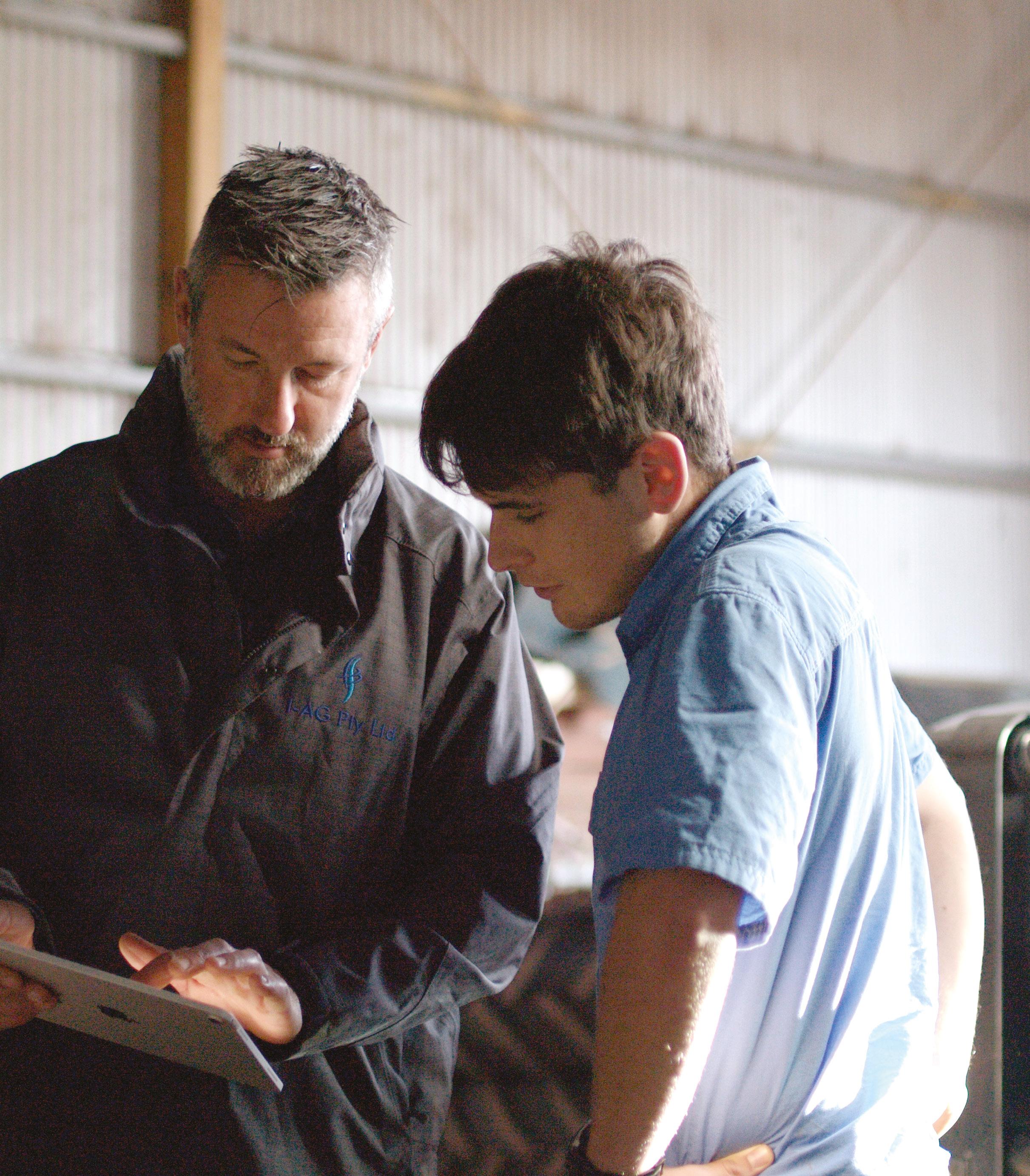
Gavin quickly became an advocate for the program and proudly espouses its benefits in finding eager employees for farm businesses

“It’s been great, and a lot of that is because of the team at AgCareerStart and the awesome support they provide� They do all the preparation and induction work for the participants and talk to them about the realities of working on a farm,” he says�

“I also love the idea that we are helping get some young talent into agriculture Julian, who was with us last year, is a great ambassador for young people Julian has moved into doing an agricultural science degree, which is awesome Alex, who we have this year, is really thirsty to learn about farming and said he wants to stick around here on the farm next year�
“It’s been a great avenue for both of them to get into the agricultural sector�”
Alex, who grew up on a small farm near Ballarat, said he is using the AgCareerStart program as a launchpad for a career in agriculture
MOVING ON UP
Luke Hall (top left) is getting used to the 2am starts on a dairy farm; AgCareerStart ‘graduate’ Julian Craven (above) has started an ag science degree since participating in the program last year.
He left school in year 11 and spent 12 months working for a company in Ballarat that manufactured agricultural spray equipment
“I did do Vet Ag as an elective in year 10 and 11, which is where the interest in agriculture stems from,” says Alex�

“I saw an ad online for the program and I thought, ‘what’s the worst that can happen?’� I had worked on farms before doing some casual harvesting and really enjoyed it
“It was more a spur-of-the-moment thing for me, and it’s one that’s worked out Gavin is great to work for and it’s a beautiful farm There is lots of hands-on work and there is never a quiet day, unless it’s raining�
“I’ll stay there as long as I can�”
“It’s been great, and a lot of that is because of the team at AgCareerStart and the awesome support they provide.”
–
GAVIN DAL BROI Warrawidgee farmer
The National Farmers’ Federation (NFF) is looking for enthusiastic farmers across Australia to participate as employers and hosts for young Australians in 2024.
Kayla said farm businesses of all shapes and sizes can apply to be a host farm.
“Cattle, sheep, grains, horticulture, cotton, pork, poultry, goats, nurseries and forestry. If it’s a primary industry, its covered in the Ag Career Start program,” Kayla said.
“We have two placements on oyster farms this year and one in the equine industry as well.”
Farmers are required to pay award wages and do not have to provide accommodation, although it is preferred.
Kayla said participants can preference a host farm based on what it produces and its location.
“We use those preferences to initially match them with up with their host farm and provide all the support needed to get their ag career started, and throughout the placement.”
Applications are now open for farmers to be a host employer. Head to agcareerstart.com.au/info-for-farmers for more information. Participant applications open in August.
“It has allowed me to learn a whole lot more than I ever thought I would have,” Luke says�
“It’s been most rewarding to look back and seeing how far I’ve come I went into dairy farming not knowing a single thing, to now having a good understanding of how a dairy farm is run ”
Luke said consumers need to appreciate the work and innovation that goes into producing a bottle of milk, including the early morning starts on a dairy farm�
“Even though I am a morning person, 2am is a very early to start the day!”
Luke completed his HSC last year and moved to the Dubbo dairy farm from Sydney’s Northern Beaches as a gap year ag adventure
“I wasn’t 100 per cent sure what I wanted to do once I had finished school, though I always thought that I’d one day like to work on a farm and understand how agriculture works in Australia,” Luke says�
“I’ve always had an interest in agriculture and spent time on my auntie’s hobby farm growing up and loved working with animals and being outdoors� I also spent some time in the Northern Territory a few years ago, and got a small glimpse into how big stations are run ”
Erika Chesworth
(pictured above with husband Steve) says that Little Big Dairy’s ‘double dose’ of AgCareerStart participants means one student can have an ‘all-round’ experience, while the other takes a more specialised path.

Little Big Dairy’s Erika Chesworth has a double dose of participants in the farm’s first year in the AgCareerStart program, with school graduate Samantha Cox joining Luke from Western Australia
Samantha is studying a Bachelor of Animal Science at the University of New England, while enjoying working on an innovative dairy farm
“Sam predominately looks after the cows and calves and the animal health management side of things,” Erica says�
“Luke is having more of an all-round experience in dairy farming That includes milking and learning about general jobs like fencing, irrigation and stocktakes for the farm’s supplies
“He’s taken to it like a duck to water
“As a farmer, I really love working with young people and getting them excited about agriculture� We have been talking about it as a family for some time and how we could do it�
“Thankfully, the NFF have come up with a way for farmers to do it and attract school leavers The NFF is also a trusted brand in reaching schools and the parents of participants ” l
Our staff are there to offer you:
• Peace of mind
• A range of insurance options
• A commitment to face-to-face service
You can trust us to understand your insurance needs. Our products can help protect you, your family, your staff, your property and your business.
Ensuring that your land and the business that you have put so much into building, is protected for the next generation.


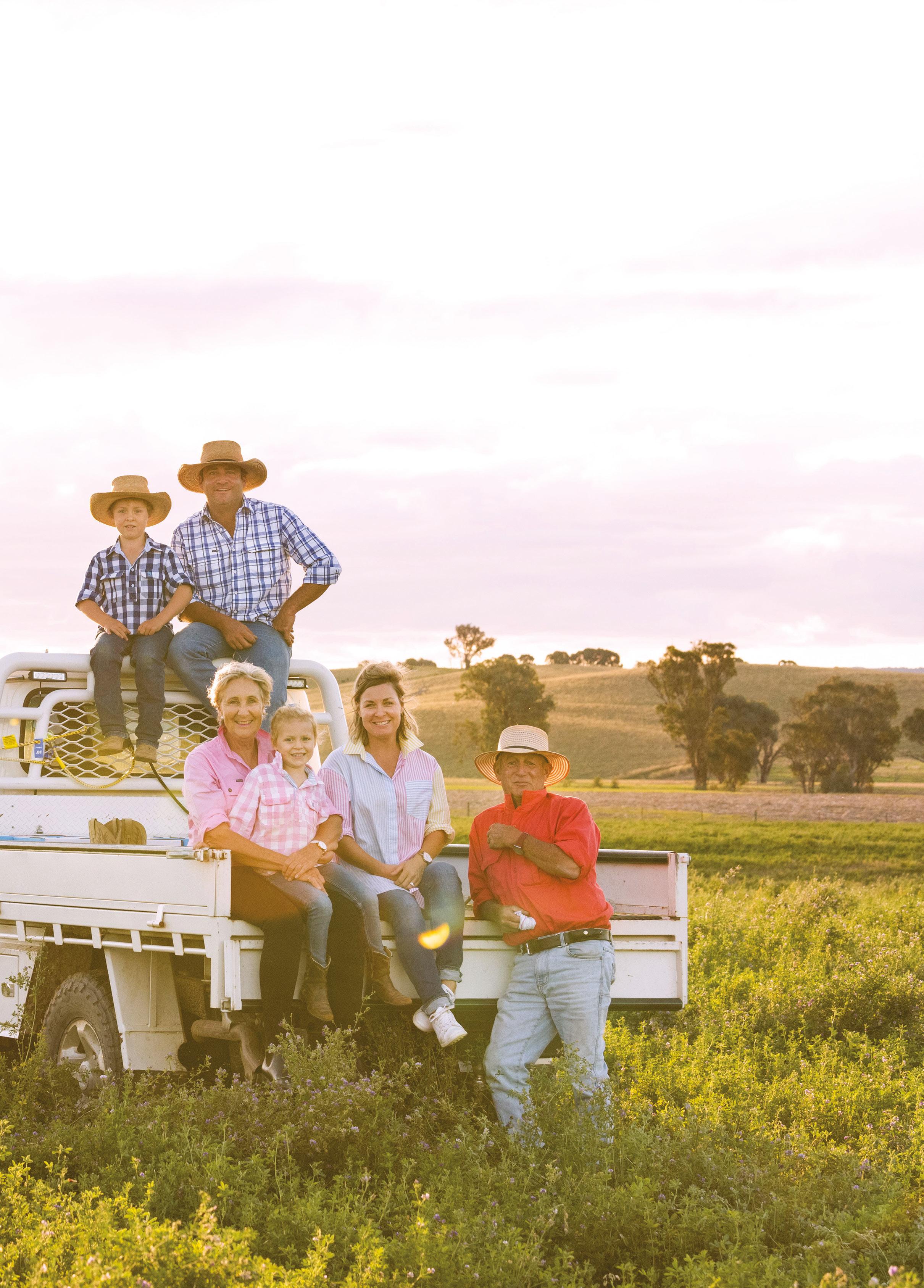
Feral pigs are rooting up the environment and agricultural crops, killing lambs and potentially spreading disease to more parts of NSW than ever before.

Coonabarabran farmer Angus Atkinson and his neighbour have invested more than $30,000 in the aerial culling of 440 feral pigs across 2025 hectares of farmland this year.
“It’s been unbelievable this year. The chopper pilot asked if I was breeding pigs as a sideline,” Angus says.
Farmers from just about all corners of the state are telling similar tales of an explosion in feral pig numbers, and the crop damage bill for the state’s north west is tipped to far exceed the $47-million estimate regarding damage to the 2020-21 winter and summer crops (Source:AgEconreport).
“I really don’t like using guns, but aerial culling does work. It’s a costly exercise that we did with zero government assistance,” Angus says.
The two aerial shooting campaigns will result in economic and sustainability benefits for Angus’s farm business, but he believes the improved environmental outcomes warrant a case for some cost sharing.
“They do huge amounts of damage to the soil, knock down fences and can spread diseases like leptospirosis. In addition to causing soil erosion, they seem to eat and dig up just about anything, which impacts native plants and animals.
“As farmers, we do have a responsibility to control feral pests and we all should do it. But there is an environmental and community benefit that I think backs the need for government support for a quick and effective method to get on top of mobs of feral pigs.”
Angus says there also needs to be funding and resources for the monitoring and coordinating culling campaigns, and a tenure-neutral enforcement program for public and private landholders.
NSW Farmers is calling for the establishment of a new government authority to coordinate and enforce management of public lands, baseline funding and staff increases to build longterm certainty.
“The agencies and organisations are there, the rules are there; there just need to be resources and enforcement,” says NSW Farmers Conservation and Resource Committee member Bronwyn Petrie.
“Unless there is an urgent and coordinated control effort on all land, this problem will only get worse.”
Feral pigs are highly adaptable, and known to cause significant damage to ecosystems and native wildlife.
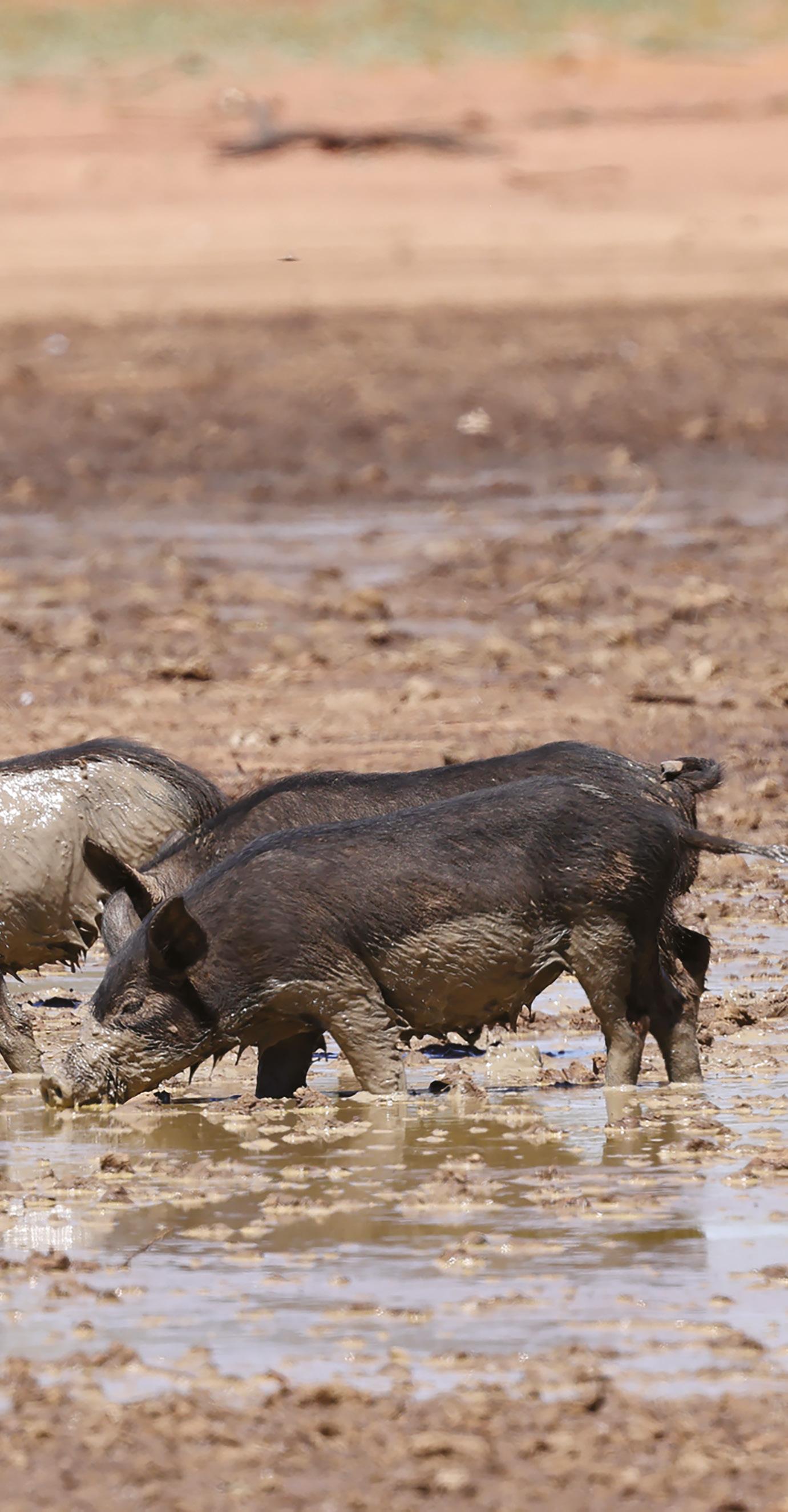
The NSW Threatened Species Scientific Committee nominated feral pigs as a Key Threatening Process for at least 18 threatened species due to predation, habitat degradation, competition, and disease transmission.
The species include the Northern bettong and long-footed potoroo, the Corroboree frog, three bird species, two turtles, and seven plants.
Moree farmer Oscar Pearse believes koalas should also be included on the feral pig hitlist. >
He says the gluttonous swine gorge on any foliage they come across, wrecking the undergrowth and landscape that koalas frequent.
“They really do have a huge impact on the soil and habitat, and would have to be displacing koalas in our forested areas,” says Oscar.
“In fact, I have not seen a koala in the last 12 months, and that coincides with the big increase in feral pig numbers.”
Oscar has taken part in two coordinated culling campaigns involving ground and aerial tactics.
“Ground control measures like baiting and trapping are effective and there is a lot of good knowledge out there,” he says. “Aerial culling is also vital in cleaning up any pigs that are left. But the key is getting all landholders involved and that means having a good carrot to incentivise farmers, and a bit of a stick to compel private and public land manages to control feral pigs.
Ad hoc culling is not meaningfully addressing the problem, as is only too clear to farmers around the state.
“The carrot could be in the form of putting the control of feral pests like pigs into the biodiversity market, given their huge impact on the environment.”
Oscar is a member of the NSW Farmers Moree branch, which has led calls for the appointment of regional pig control coordinators to facilitate culling programs.
Introduced by British settlers on the First Fleet in 1788, pigs quickly escaped and began establishing feral populations along watercourses and on floodplains in the Greater Sydney region.
By 1880 they had spread across half the continent, and reached such numbers that they were considered a pest in NSW.
When the most recent survey by the Department of Primary Industries was released in 2020, there were believed to be some 23.5 million feral pigs roaming through every state and territory in the country, as well as isolated populations on many offshore islands.

Under normal conditions, sows produce about six piglets every six months. However feral pig populations can increase up to 86% per year in ideal conditions such as those seen over the past three years when La Niña brought above-average rains and major flooding to vast swathes of Australia’s south east.
“There has been enormous damage to cotton crops in our region,” Oscar Pearse says. “I would estimate losses of $20,000 to $30,000 with grain crops on our farm.”
The Federal Department of Sustainability and Environment estimates feral pigs destroy 20,000 tonnes of every sugarcane harvest each year and eat up to 40% of newborn sheep in some areas, costing Australian farmers more than $100 million per year.

“Aerial culling is also vital in cleaning up any pigs that are left. But the key is getting all landholders involved and that means having a good carrot to incentivise farmers, and a bit of a stick to compel private and public land manages to control feral pigs.”
–OSCAR PEARSE Moree farmer
The damage done by mobs of pigs can easily be seen from the air.
Aerial photo credit: Tony Lockerby
The past three years have also coincided with some of the highest levels of culling efforts for feral animals, driven by programs to combat the spread of foot-and-mouth disease, and funds from the 2020 bushfire response.
More than 75,800 cloven-hoofed animals, of which 70,198 were feral pigs, were culled in Local Land Services’ (LLS) aerial and ground baiting programs in 2022 and this year.

Under the banner of the National Feral Pig Action plan, the National Parks and Wildlife Service (NPWS), LLS and other authorities joined forces with more than 100 landholders to remove 43,608 feral pigs from the Western Riverina region.
But these initiatives are being undermined by some private and public landholders who are not doing their part to control feral pigs on their land, according to farmers like Angus and Oscar.
Bronwyn Petrie says public landholders are among the chief culprits.
“Farmers know that’s where the pigs are breeding because we see them coming onto our farms from public lands,” she says. “Yet over the past seven years, there hasn’t been a single prosecution of public land

managers for animal pests. We can see huge problems on the horizon if we don’t do this job properly.”
Jack Gough from the Invasive Species Council concurs. Jack is the advocacy manager for the Katoomba-based NGO that works to seek stronger laws and programs to protect Australia from pests, weeds and diseases.
“We need more landowners, both government and private, participating,” he says. “But the really big problem at the moment is there is no aerial culling taking place over two million hectares of state forests in NSW. That is purely because the department refuses to approve aerial culling, as they say they need to protect ‘hunting amenity’, which is just ridiculous in my opinion.
“There needs to be a requirement in this state for all landholders to participate in regional control programs, and to take away their veto power over aerial culling. It just makes sense, especially when one considers that it’s a free service.”

The past three years of La Niña rains have only led to increased breeding by feral pig populations. Aerialphotocredit: TonyLockerby
The funding model for feral pest control in NSW presents another major problem.
“It’s a broken model because it’s project based,” says Jack Gough.
“At the moment we have sufficient funding from bushfire money and foot-and-mouth disease control but, when that dries up, we are going to have to scramble to figure out where the next round of funding is coming from, rather than increasing the baseline number for funding and staff.
“If we don’t get those resources, pest control becomes very ad hoc and based on what funding is available, as opposed to constant suppression of pests across the landscape. Right now, we need a $30-million increase to stay ahead of the problem.”
Dr Joe McGirr, the sitting member for Wagga Wagga and the politician at the forefront of the movement to reduce the number of brumby horses from Kosciuszko National Park, agrees the system needs to change.
Control of feral pigs requires a combination of baiting, trapping and mustering from helicopters, according to Animal Control Technologies Australia, a manufacturer of baits to poison pigs and other feral pests. “To get the big old boars that have grown to old age and are too smart for traps, the ones that do all the breeding, shooting is needed – one clean shot to the back of the head,” says a spokesperson for the company.
Data from NSW NPWS substantiates the claim. Of 28,684 feral pigs dispatched inside national parks from 2016 to 2019, only 8% were caught by traps. Another 8% were neutralised by ground shooting, while the remainder were taken out by aerial shooting.

“It’s not just a matter of funding shortfalls but also the end of the current funding, which expired in June,” Dr McGirr told The Farmer, “Because the cost of doing nothing is too great. Until feral animal populations are reduced to a level of negligible impact, I would consider an increase in funding to wildlife officers to be very appropriate.”
Dr McGirr is also working to solve the problem of individual landholders’ veto rights over aerial shooting.
“During the 2023 State Election campaign, I endorsed a policy on having a feral pig and deer coordinator, designed at resolving exactly such a problem. There needs to be a central coordinating authority that can effectively manage and consult with all public and private stakeholders to prevent the further spread of these destructive feral pigs.” l


The Australian beef industry and cattle herd are well positioned to capitalise on changing global supply dynamics in 2023.

With prices realistic and numbers reflecting that the cattle industry is moving beyond simply herd rebuilding, this year is a time of consolidation and commercial planning.
 –
Words SUE WALLACE
–
Words SUE WALLACE
The Australian beef industry has made great headway in achieving ambitious sustainability goals as the industry again faces challenges after several years of robust returns.
A recent annual update from the Australian Beef Sustainability Network, which NSW Farmers participates in, reflects increased carbon sequestration and a reduced environmental footprint.
John McKillop, Independent Chair of the Red Meat Advisory Council, says the livestock industry is more engaged in sustainability than ever before.
While cattle prices return to an arguably more realistic level and reset, confidence in Australia’s cattle industry continues.
According to the latest Cattle Industry Projections update from Meat & Livestock Australia the Australian beef industry and cattle herd are well positioned to capitalise on changing global supply dynamics in 2023.
It describes it as a year of transition and maturity for Australia’s cattle herd, with any increases in numbers now beyond rebuild status, with all key production metrics forecast to improve this year.
Continued rainfall and favourable seasonal conditions seen last year will ensure that there will be solid supply of both young and slaughter weight cattle over the next two years, regardless of seasonal outcomes.
HAZELDEAN KEEPS POWERING AHEAD
Ed Bradley, sales and marketing manager of Hazeldean Angus and Merino, says with changes in the cattle market cycle, commercial relevance is coming under the spotlight again.
“Focusing on money-making traits is becoming more important as profit margins are shrinking in the commercial cattle enterprise arena. Fertility and
GENTLY DOES IT
Breeding cattle with gentle temperaments translates directly into solid profits, at Hazeldean Angus and Merino.
docility are key profit drivers in a beef business,” he says. “Cattle with gentle dispositions don’t lose weight through mustering, processing, and trucking.”

Ed adds that highly docile cattle can easily keep ‘doing’ through the transition and it’s a hidden profit driver.
“Having bad temperaments is a risk decision as the average age of farmers is getting older and farmers are staying on the land working longer, these types of issues need to be taken seriously,” he says.
The hearty Monaro-bred cattle have been delivering results for more than 70 years and the stud herd has grown to more than 2800 females – one of the biggest in Australia.
Ed says the long-term future for beef in Australia is very bright and they are hoping for the market to rally, especially 2025 through 2026 as the USA herd rebuilds.
The three upcoming sales include Drillham Queensland on August 3, Tamworth on August 8 and the Spring sale on September 7 at the home base Cooma, NSW, will see 440 bulls for sale.
Hazeldean offers free delivery of sale bulls and all bulls are independently structurally assessed and semen tested prior to sale.
“Focusing on money-making traits is becoming more important as profit margins are shrinking in the commercial cattle enterprise arena. Fertility and docility are key profit drivers in a beef business.”
–
ED BRADLEY Hazeldean Angus and Merino
The Mystic Angus stud at Goorambat may be relatively new on the scene but it’s attracting attention with an emphasis on involving young family members and buying top quality stock.

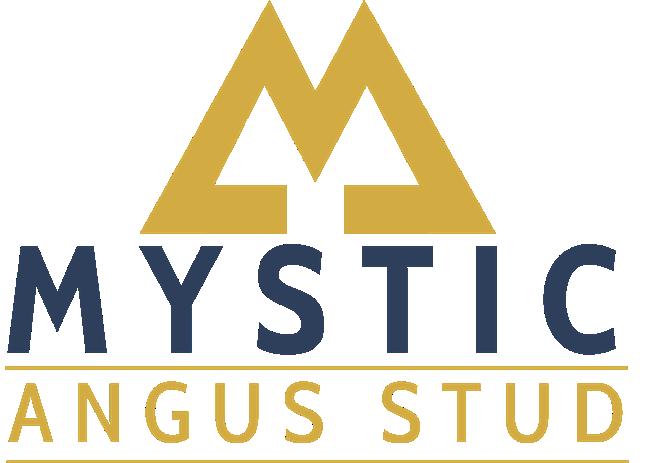



The top-priced 818kg bull from this year’s Sydney Easter Show Parade Angus sale is the chief sire at the cattle stud at Goorambat.
Throwbridge Fireball T01 won the reserve junior champion at the show and was bought by the family for $17,000.
Peter Wilkinson says he was impressed by his structure, softness and overall performance.
“With this type of performance, producing commercially profitable bulls for our local area shouldn’t be too hard,” he says.
Peter says the stud’s aim is to produce high-quality seed stock to advance beef production into the future. His five children are involved in the Angus breeding including Tom, 17, James, 15, Lucy, 11 Edward, 4 and Archie, 2.
“We want to focus on the need for young people in agriculture,” he says.
The stud will be offering 40 bulls at its annual spring sale on August 11, featuring the first sons from three of their sires.
Mystic Angus, named after the views on the property, also has a commercial herd of 500 Friesian x Angus cows.
Tom Wilkinson says the business is well prepared for any El Niño rainfall shortages with properties in several areas and a big stock of silage.
IN FINE FORM
Healthy, well-framed and structured animals are key to advancing Angus production at Hazeldean
70 YEARLING BULLS – 15 2 YR OLDS
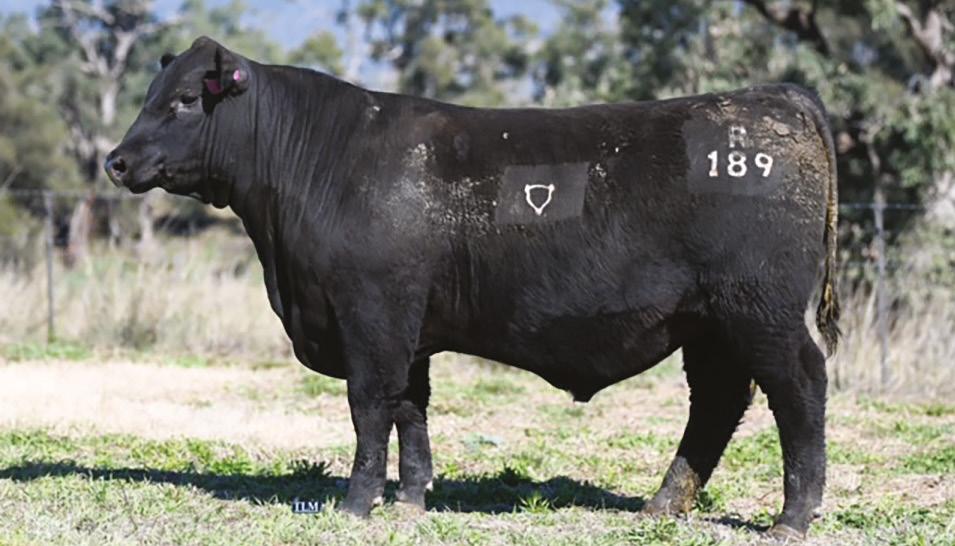

FRIDAY 25TH AUGUST 2023
ONLINE SALE AUCTIONSPLUS 1PM
7TH ANNUAL CHOICE ANGUS YEARLING BULL SALE
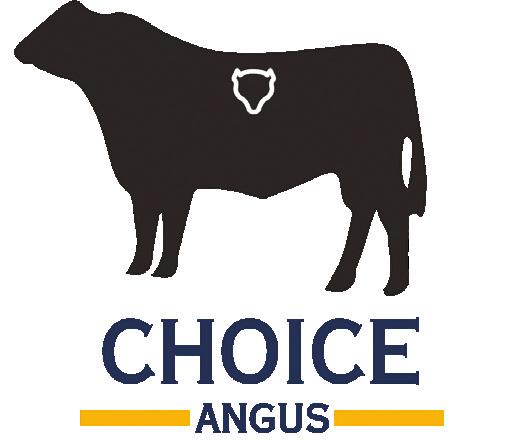
Inspection Day at “Coolowie” 2208 Eulourie Rd, Pallal NSW 2404 Wednesday 23rd August 10am-4pm- refreshments available
BLOODLINES INCLUDE:
➤ Millah Murrah Paratrooper P15
➤ Karoo K12 Realist N278
➤ Sydgen Enhance
➤ S Powerpoint WS 5503
➤ Sterling Pacific 904
➤ Musgrave 316 Exclusive
➤ Texas Moe Q709
➤ Milwillah Identity Q104
➤ Ben Nevis Quanbean Q375
➤ Choice P499
➤ Choice P149
We aim to breed bulls that have good depth, bone and softness while maintaining exceptional temperaments and structure whilst balancing positive fats.

“Producing commercially profitable bulls for our local area shouldn’t be too hard.”
–PETER WILKINSON Mystic Angus
(above) and Mystic Angus (right).

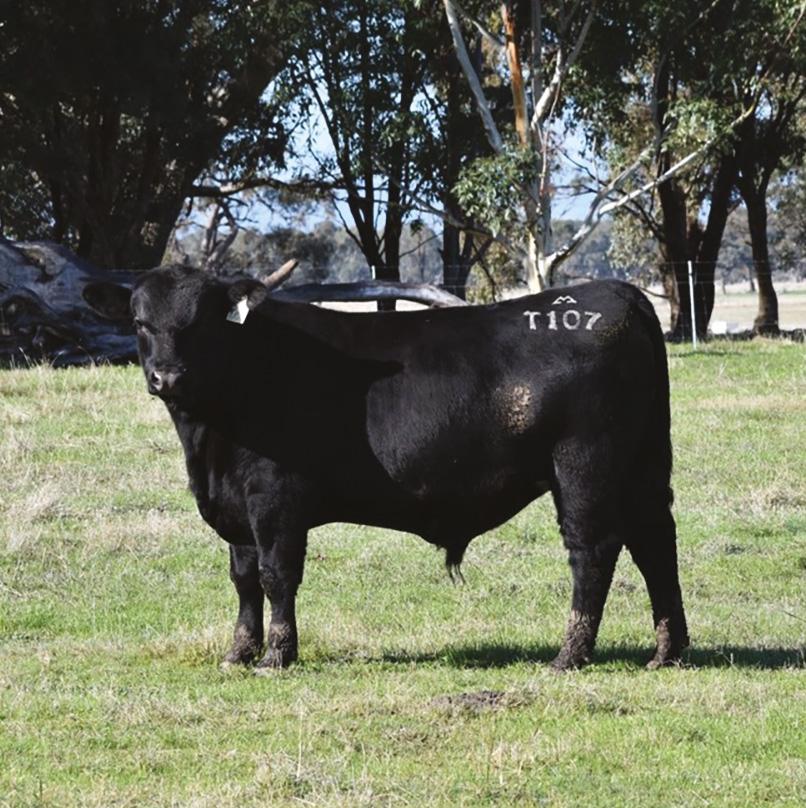
Relocating to the Upper Horton district in northern NSW from Molong in 2020, has been a successful move for Choice Angus Stud.

The stud is run by business partners Rebecca and Tim Brazier, who redirected their focus on the genetics a decade ago. They invest in Canadian, New Zealand and Australian genetics to grow their commercial and stud herds.
Both Mystic Angus (top left) and Choice Angus (left) have bulls looking ready to do well in their respective spring sales in August.
“In our females we are looking for medium-framed cows with positive fats for fertility, good milk numbers and good 400-day weights. In our bulls it’s finding the balance between IMF and Carcase with strong 400-day weights all the while keeping good structure, feet and thickness,” Tim says.
Continuing good seasons have ensured the bulls are on track for the spring sale on August 25 this year, which will be conducted online following an open day on August 23.
“This year’s sale will feature an outstanding lineup of 70 registered yearling bulls with proven genetics from our female herd combined with the current elite sires of the Angus breed,” Rebecca says. “We use some of our yearling bulls in our own stud.”
Alongside the stud, they run 400 commercial trade cows which are then sold to local markets.
While 2023 is set to be a year of transition for the cattle industry with financial and rainfall fluctuations, the Australian Beef Sustainability Network reports that over the past 20 years, global consumption of meat has grown, with beef and veal increasing at an average annual rate of one per cent.
Australians are among the world’s largest consumers of beef, with per capita consumption in 2021 averaging 19.2kg, factoring for the majority of the recommended 23.6kg of red meat intake per year.
This domestic consumption represents the largest single market for the Australian beef industry which adds to overall confidence.
Statistics show that the Australian beef industry has reduced its net CO2e emissions by 64.1 per cent since 2005 while carbon sequestered in vegetation on red meat properties reached its highest recorded amount since 2015, sequestering 28.42 Mt CO2e. l
“This year’s sale will feature an outstanding lineup of 70 registered yearling bulls with proven genetics from our female herd combined with the current elite sires of the Angus breed.”
–
REBECCA BRAZIER
Choice Angus Stud

Blue mussels, sought after as one of the most sustainable farmed proteins, and with high omega-3 levels, are being harvested in the only marine farm in NSW.

Mussel farming captures a highly nutritious and popular animal that is raised in nutrient-rich warm marine waters, in sheltered bays. In NSW, there are two licensed farms. One is a 50-hectare lease site in Twofold Bay, Eden, where mussel spats are grown and harvested; the spats are the baby molluscs and can only be harvested under licence.
In NSW, Twofold Bay is the only known reliable area for spat settlement. The second farm, also a 50-hectare leased site, is in the Marine Park of Jervis Bay, where the spats are replanted and blue mussels are grown out and harvested for market.
Both farms are leased by Blue Harvest, founded in 2005 as a sales and marketing agency representing
shellfish farmers. In 2018, the principals of Blue Harvest formed South Coast Mariculture (SCM), and that business has been developing the mussel farms since 2021.
“Our mussel farm grew out of an opportunity to invest in Jervis Bay, within the marine park,” says SCM managing director Sam Gordon.
The journey to be mussel farmers began before then for Sam Gordon, Jim Doyle and their partners. Already operating Blue Harvest in the retail, hospitality and restaurant sector, they were frustrated with the undeveloped potential of a NSW mussel industry.
This included opportunities to value-add the product, develop a sustainable processing practice, and identify export opportunities for the Australian blue mussel, so they ‘put their money where the mussel was’ and invested in downstream supply chains to further develop the industry.
“We knew we had a market demand, and we knew we had natural competitive advantage with
access to markets and incredibly fertile water for our ‘paddocks’,” Sam says.
Along the way the team has dealt with the triple whammy of bushfire, COVID-19 and floods, and the consequent effects on their mussel beds.
They’ve also invested to create a sustainable business that now employs 30 people between Jervis Bay and Eden, and at peak production operates 52 weeks a year.
Mussel farming is commonly practiced on longlines or rafts. Long ropes are anchored and looped, and raftfarming uses ropes suspended from an anchored raft.

In NSW, longlines are preferred over rafts, for aesthetic reasons. Using longlines also enables the farm to complement recreational diving and boating activities by the general public.
The NSW government has authorised mussel farming (under licence) within the Jervis Bay Marine Park, and that, in itself, creates a shared user component. Of course there will always be a proportion of the farmed stock lost through fishing by humans and predation by marine life.
“It’s a very positive story to be working in a marine park,” Sam says.
“Mussel farming creates an artificial reef that’s a floating area. We encourage recreational fishers and divers to be in the lease area. The whalesighting tourist boats have incorporated the reef into their tours.”
Operating in a marine park creates an overlay of additional complexity, but Sam has found a way of dealing with it.
“There’s more reporting, independent audits and studies (in partnership with universities and research
Loops of rope are used to gather the spat, or baby mussels, in Twofold Bay. The spat are harvested and transported to Jervis Bay where they are re-seeded onto ropes and mussels grow.


agencies) that need to be undertaken because it’s a marine park,” he says. “We deal with more than 20 government departments.
“I had to take up meditation to deal with all the paperwork.”
The 2019/2020 bushfires that impacted the Shoalhaven and Sapphire coastlines of NSW left behind burned trees around Twofold Bay. The subsequent flash floods in early 2021 washed this timber into Twofold Bay, and Jervis Bay saw an influx
of round bales swept off surrounding farmland into the marine environment.
“The logs washed into our leases and got tangled in our spat lines,” Sam says. “We lost about $1 million of spat.
“The round bales washed into our leases in Jervis Bay, creating problems there.”
Natural runoff was also compounded by the excessive floods – with excess nutrients flooding into the Bay and the risk of e-coli, the mussel leases were closed to harvest.
While a seasonal occurrence of macroalgal blooms was expected, no one could plan for an influx on this scale.
The effects of natural disaster were compounded by supply chain problems that meant ongoing challenges with establishing and expanding the business.
“When COVID-19 hit we were still in the start-up phase,” Sam says. “We were getting a purpose-built boat constructed in Tasmania. We were trying to import specialised pieces of equipment from overseas, and needing them to be commissioned here.

“We wanted marine drill specialists from New Zealand to help us set up the artificial reef, but they couldn’t come to Australia.
“Instead we purchased a marine drill that leaves a minimal environmental footprint and we had to wait for that to be imported; but it means we have that asset we can use when we want to.
“Of course, everything was affected by border closures.”
While the effects of historical events – floods, macroalgal blooms – were part of the company’s risk management plan, it was based on Jervis Bay being normally closed for six days a year.
FRESH HARVEST (Top left to right) The mussels are regularly inspected for growth and health; harvesting mussels grown for the Sydney retail and hospitality market; Sam Gordon, managing director of South Coast Mariculture.
“In 2022, the mussel farm in Jervis Bay was closed to harvesting for 25 weeks,” Sam says.

“Mussels are filter feeders, and the advantage of Jervis Bay is the confluence of warmer waters coming from the east intersecting with cold water coming up from the Antarctic.
“The water flowing from Antarctica is oxygen rich and carries a lot of plankton and krill. These nutrients mixing with the warm water creates a (healthy) bloom, which the mussels feed on.”
Unfortunately the additional nutrients created a dangerous bloom that led to substantial stock losses, as the mussels continued to grow and eventually became too heavy for the ropes they are growing on. They fell off.
“Mussels take 14 months to two years to grow to harvest size,” Sam says.
“We can normally harvest 12 months of the year, but because we had to stop from March to July, our production cycle was thrown out and the mussels got too heavy and fell off the lines.”
“We knew we had a market demand, and we knew we had natural competitive advantage with access to markets and incredibly fertile water for our ‘paddocks’.”
–SAM GORDON Managing director of South Coast Mariculture
The idle harvest period enabled Sam and his partners to improve their meat processing system, invest in a significant warehouse facility, and install a solar power facility and water recycling equipment.
The live holding tanks have ultraviolet light and biological filtering installed in a closed loop system.
The company has also installed a specialised deep chill ice machine from Canada that extends the shelf life of live mussels.
They invested in eco-friendly packing materials: compostable mesh bags accredited to European Union export standard and recyclable trays that enable the mussels to be modified atmosphere packed.
The company also doubled the size of the farm within the existing lease in Jervis Bay.
Production has increased to meet demand for fresh mussels, transported daily to Sydney, and for value-add products. Sam says that the company is also exploring export opportunities.
“Starting this month (July) we’ll be packing our processed meat products, as well as fresh mussels.”
There are a lot of value-add opportunities for mussel meat.

“We’re looking to do mussel pots and pickling, brining and smoking mussels – processing mussels makes the meat more accessible for people who don’t want to eat a live animal.
THE SUPPLY CHAIN
(From top left) Sorting the catch for the trucks that bring fresh Jervis Bay blue mussels into Sydney daily; freshly shucked male and female mussels, grown in Jervis Bay Marine Park; it takes 14 months to two years for a mussel to grow to harvest size.
“A lot of products are made out of dried mussel meat: omega-3 health products and pharmaceuticals, equine health products, and dog pet food treats. What you’re able to do with mussel meat protein is up to your imagination, according to Sam.
“Business continuity is your friend, and we’re able to harvest more mussels by value-adding from products stored in our warehouse.”
South Coast Mariculture is also spreading its risk against other natural disasters and extreme weather impacts. They recently broadened their supply base and are collaborating with mussel farmers around Port Arlington, in Victoria.


“Looking to the future, and the risk of climate change impacts, we’ve broadened our supply base and are bringing Victorian mussels to Sydney markets,” Sam says.
The logistics involve collecting the Victorian mussels and keeping them moist and cool during road transit to Jervis Bay. These mussels are then placed in the live holding tanks.
“They get a nice refresh, and then they’re able to be processed,” Sam says.
He also says that disease and cross-contamination risks from the Victorian mussels are mitigated by the ultraviolet light and biological filtering in a closed loop system in the live holding tanks. l
“Looking to the future, and the risk of climate change impacts, we’ve broadened our supply base and are bringing Victorian mussels to Sydney markets.”
–
SAM GORDON
Managing director of South Coast Mariculture

Farms are risky workplaces. In fact, workers in the agriculture sector are at far greater risk of being injured or killed at work than those in most other sectors. Each year on the third week of July, the industry celebrates National Farm Safety Week, where we promote the importance of safety on farm and the need to protect our farmers and farm workers the best we can. The focus of the week in 2023 is tractor and machinery safety, one of the leading causes of on-farm fatalities last year.
Workplace health and safety on farm is everyone’s business, but the challenge of getting the right WHS framework in place can be complex, time consuming and daunting for farmers.
To help make it easier, NSW Farmers delivers the NSW Farm Safety Advisory Program, made possible by funding from the NSW Government, through SafeWork NSW. This free program provides farm businesses with the specialised, practical support from advisors who understand the industry, through a series of dedicated workshops and farm visits, as well as specific programs such as Safer Shearing Sheds, Easy to do WHS for Farmers, and Harvest Readiness.
Our expert advisors have been working with farmers on their WHS for years, and through the program can support your safety efforts by:

◆ Holding a discussion or information session in you region on safety topics specific to your needs and farm.
◆ Working with you directly on farm to identify safety issues.

◆ Providing you with practical resources so you can farm safely. These include induction checklists, hazard checklists, safe work procedures and safety awareness videos.
When Anna Warmoll signed up for NSW Farmers’ Easy to Do WHS training program, she knew that stepping up the rigour around WHS for her growing workforce was important, but she wasn’t sure where to start. After just a few hours of practical advice, she’s launched more than a dozen initiatives, from first aid kits in the headers to a new clock-on system that includes contractors.
“The best thing about the workshop was that it provided direction and helped us work out where to start. You go in thinking oh my gosh, we’re never going to get there, but the program broke things down, helped us look at what we were already doing, and helped us work out our next steps,” Anna says.
If you want more information on the NSW Farm Safety Advisory Program, visit www.nswfarmsafety.org.au
The Farm Safety Advisor can be contacted on 1300 794 000 or at nswfarmsafety@nswfarmers.org.au
A talented wool classer can make the difference between a good season and a stand-out season for farmers and shearers, and learning the trade can lead to an exciting career –if you’re ready for the fast pace. –
 Words JEANETTE SEVERS
Photography JEANETTE SEVERS, RACHAEL LENEHAN & BRETT NASEBY
Words JEANETTE SEVERS
Photography JEANETTE SEVERS, RACHAEL LENEHAN & BRETT NASEBY
The role of wool classing is important to prepare the clip. The farmer invests a year’s work into breeding, managing, husbandry and feeding the flock. Then it comes to shearing time and the shorn fleece is gathered from the board and thrown across the table.
This is a point of reckoning.
A good wool classer makes a significant difference to the economic return to the farmer for that long year of work and care. A good wool classer also runs the shearing shed and sets the standard for how everyone works together and ensures the animal welfare protocols are followed.
There are a number of pathways into wool classing, and it can be an entry point for people into agriculture and farming.
A tonne of wool can be converted into a lot of products: apparel, car seats, floor coverings, curtains and more. Wool blends with other fibres to make insulation and other products.
The pressure on the wool classer is to maximise the value of the fleece to the grower.
“When you’re a wool handler and you go to your daily work, your job is to get the fleece away from the shearer, but you’re also trying to value add to the farmer’s 12 months of work to prepare the fleece,” says Tom Kelly.
Tom is a national trainer and assessor for shearing and wool handling, and the immediate past chair of Sports Shear Australia.
“Wool handling is unique because you have to work in a team,” Tom says. “The shearer is an individual but the wool handling and classing team has to work together.
“A wool classer walks into a shearing shed and is under a lot of pressure.
“The shearer is shearing the sheep quicker and has got a fast work flow happening. Then you, the wool classer, is relying on the wool handlers to use their skills to prepare the fleece, ready for you to class.

“You’re dealing with seconds of time. You have to be economical with your technique and ensure there’s a good team environment so the stain is kept out of the clip.”
How the fleece is thrown and subsides onto the table affects how fast and accurately the classer can skirt and identify where the stains are.
The wool processing company sends feedback about the clip to the farmer and wool classer. The representative of the wool company will also provide feedback to the wool classer about what is needed for the market.
“The wool classer can help the farmer identify how to better prepare their fleeces before they even come off the sheep,” says Tom.
“When the wool classer puts their stencil on the bale, that accredits and audits what the grower has done for the past 12 months, and justifies the preparation of the clip.
“Ultimately the grower’s sheep and wool enterprise is about getting the best return back to the farmer.” >
“You’re dealing with seconds of time. You have to be economical with your technique and ensure there’s a good team environment so the stain is kept out of the clip.”
–TOM KELLY Trainer and assessor
The Australian wool industry is a founding partner in the development of a World Championship competition. Competitions are designed to lift the quality of the skills of shearers and wool handlers and classers. It’s an atmosphere that builds upon the wool classer’s ability to scan a fleece and quickly identify – in seconds –the stains, burrs and other flaws. This is all assessed against a set timeframe.
“Competitors are judged for their workmanship on the board and their preparation of the fleece and oddments,” says Tom Kelly. “In the workplace, you keep practising your skills and you then go back to competition to compete against the best.
“The whole purpose of competing is to help develop your wool harvesting skill set.”
Earlier this year, two Australian wool classers – Mark Purcell and Racheal Hutchison – won the Trans Tasman Championships.
The pair travelled to Scotland in June as part of the Australian team to compete in the 2023 Golden Shears Sheep Shearing and Woolhandling World Championships, that was held at the Royal Highland Show in Edinburgh.

Tom said the Australian team were strong competitors, and were match-fit for the World Championships, coming off the back of a strong shearing and wool handling season.
Mark, from Victoria, is Australia’s national wool handling champion and Racheal, from Gilgandra, NSW, is the runner-up Australian champion, an eight times Australian champion wool handler, and runs a contract wool harvesting team.
She is responsible for organising up to 16 workers, at any time across one to three sheds in the Gilgandra district.
Racheal started working in the wool industry when she was 16 years old, although she was brought up in the industry – her father and brothers were shearers.

“I didn’t know much different,” she says.
Racheal spent five years as a rouseabout in her brother Bill Hutchison’s shearing team. He was also competing in shearing competitions, and Racheal tagged along, competing in the wool handling contests.
She also competed in her first Trans Tasman wool handling competition in 2007. In 2008, with her first baby in a pram, Racheal undertook a Certificate IV woolclassing course, through TAFE at Dubbo. At the same time, she also took over organising Bill’s contract team.
Fast forward a few years, and with her third baby at foot, Racheal added her brother Danny Hutchison and his contract shearing and wool classing team to her original one. Danny has since retired.
Racheal’s partner, Jeff Rout, also works for her.
“I decided to offer to run the combined team and it’s grown,” Racheal says. “The main crew have their own farms that they’ve purchased by working as shearers and wool handlers and classes.”
Wool harvesting continues to be a family affair. During school holidays, Racheal and Jeff include their three children in the contract team.
Maverick and Conrad are in the shearing team and recently competed at the 2023 Trans Tasman contest in New Zealand.
“[Daughter] Sasha has also pitched in to help and picks up the belly wool and sweeps the shed,” Racheal says. “There are a lot of improvements in conditions in shearing sheds.
“We’re starting to see farmers install toilets – or hire temporary toilets. There’s more sheds with running water and soap. Those types of conditions build positive relationships between the farmer and my crew.
“We need each other and together we’re having a positive impact in the wool industry.”
Racheal says the opportunities in the wool harvesting industry include travel around the world.
“It’s also quite good money and there’s a variety of people you meet,” she says.
The role of the wool classer, who manages the shed, is integral to success. Racheal says the wool classer is the shed overseer, ensuring everyone turns out good quality work throughout the process.
“The wool classer is managing that shed all day,” she says. “They’re managing and developing the skills of the people. They’re responsible for ensuring the good quality of the farmer’s clip that goes into the bale at the end of the day.”
Racheal says there is added responsibility because more people are entering the wool industry without a background in the fibre.
“But everyone in the crew has skills to share with others,” she says.
When Racheal competed in the World Championship in Scotland in late June, Racheal and her family travelled to the United Kingdom a couple of weeks before, to practice with the different fleeces.
“The fleeces in the UK are different to Australia,” she says. “They’re matted, like carpet wool.
“At UK competitions they also don’t skirt the fleece. I’ve been studying the rules and practising rolling the fleece. They want us to roll it like a Swiss roll and tuck in the neck.”
Training in the industry can begin under the tutelage of a parent or other relation.
Shearing and wool handling schools are held in sheds, based on interest. There is also formal accredited learning through TAFE.
“The wool harvesting industry is a skilled industry,” Tom says. “Regular shearing and wool handling schools are held every month through the year.

“With a week-long introductory skills course, people get an opportunity to ignite a fire to be involved in wool harvesting.”
That ignition can carry a person a long way in the wool industry.
Stacey Lugsdin, a wool classer in Hay NSW, came into the wool industry – and agriculture – by marrying Ian Lugsdin, a sheep producer. When the couple diversified their businesses, which saw Ian running a Toyota dealership, Stacey stepped up to manage the farm.

She is in charge of developing and managing a self-replacing Merino flock, with up to 3500 breeding ewes, producing 20 micron fleeces.
The flock is side-sampled before shearing, and shorn every six months for lamb survivability.
The first thing Stacey did in her new role was to learn wool classing.
“I went to Deniliquin TAFE one evening a week for 18 months,” says Stacey. “I absolutely loved it.”
She went on to undertake further development as an elite wool classer, classing SRS sheep.
“My wool classing developed my love for what I do,” she says. “It started a journey I adore.”
Stacey also learned to shear, to gain an insight into setting up the handpiece and how the fleece comes off the sheep. She can still crutch a sheep if necessary.
Being responsible for the wool clip at home, Stacey realised there was a lot of complexity to growing wool. She became interested in genetics research and started measuring fleece weights and traits.
“I found I loved wool, I had a massive passion for wool,” Stacey says.
As her expertise as a wool classer grew, Stacey was offered a TAFE teacher’s role, instructing at shearing and wool handling schools and teaching a Certificate IV.
“The TAFE systems offers a two-year
course to develop the skills the wool classer needs,” she says.
A few years later, in 2014, Stacey applied to university to learn more about wool production. It led her to study for a diploma in agriculture in wool production.
“I learned everything about wool from how it grows on the skin, marketing and the supply chain,” she says. “I went to university to get reinforcement and formal recognition for my own self-learning from observation.”
At the same time, Stacey began electronic tagging every ewe on the property and recording their fleece data.
“Using Australian Sheep Breeding Values (ASBVs), I’m looking at data I can measure,” she says. “And it’s objective data.
“Seeing the wool we produce, and bringing in the ASBVs, fleece and micron testing, has enabled us as a family business to get to a product we’re happy with at this point.
“We manage the flock with individual animal management, and each sheep has to grow a really good fleece, that weighs well, is ethically raised, and has the characteristics a buyer is after.”
She recognises how her own learning trajectory has really benefited their wool-growing business.
“The value of wool classers in the industry is they are trained in preparing wool that is uniform in length, strength and the co-efficient of variations is less than 20mm,” Stacey says.
“To the trained eye, that’s easy. Wool classing students need to keep gaining the knowledge needed to ensure Australia’s wool clip retains its reputation for being a good quality product.
“The wool industry is also becoming more technology savvy.”
Stacey says the challenge in the industry now was to empower wool classers to manage the shed.
“The wool classer is meant to be the manager of the shed,” she says. “We have to teach those who are graduating how to deal with people, and empower them to study and learn management skills.
“Having people taught their skills thoroughly, enables them to have skills that become natural instinct.” l

Nearly 300 farmers from all corners of NSW will gather as delegates at Rosehill Gardens Racecourse for the NSW Farmers Association Annual Conference on 18-20 July 2023.
 Words DARREN BAGULEY
Words DARREN BAGULEY
REAL FACE TIME
NSW Farmers CEO Peter Arkle taking part in lively conversation and presentations at last year’s Annual Conference.
SW Farmers is Australia’s largest state agricultural organisation, representing the interests of its farmer members. As a result, the event is a highlight of the agricultural calendar and brings farmers and industry thought leaders from across the state to Western Sydney, the event’s new home for 2023, for three days of discussions, networking, presentations and exhibitions.
An ancient Chinese curse says ‘May you live in interesting times,’ and the times have been interesting indeed for Australian primary producers. The worst effects of bushfire, flood and the COVID pandemic may be behind us but as anyone wanting to buy a new tractor, ute or other piece of farm machinery knows, global supply chain issues continue to put a brake on farmers’ productivity.
to higher prices for fuel, energy and other inputs such as fertiliser and other agricultural chemicals. These and other issues promise to be the source of lengthy and lively discussion as delegates debate around 100 motions on agricultural and rural affairs.
Some of the major topics of deliberation are set to include biosecurity, a perennial topic brought into sharp focus by the Varroa mite incursion and federal government changes to funding arrangements; energy transition, another highly relevant topic in the light of skyrocketing energy bills; land planning; livestock traceability; and the management of pests, weeds and water.
AN IMPRESSIVE LINE-UP OF SPEAKERS
Just as at previous conferences, 2023’s event will offer an impressive array of speakers providing insight on a broad range of industry, corporate and government issues. The NSW Premier, Chris Minns will attend the conference and there will be presentations
Supply chain issues, coupled with war in the Ukraine, continue to drive inflation that in turn leads >
from companies and organisations including Bayer, WaterNSW, AWI, NBN Co, Telstra, ARTC Inland Rail, the Biodiversity Conservation Trust and the GRDC.

NSW Farmers CEO, Peter Arkle, says it is exciting for the conference to be at a new venue in the geographical centre of Sydney. “NSW Farmers is the voice of farmers in New South Wales. As a grassroots organisation, our policies are made by farmers, for farmers. From paddock to parliament, we advocate on issues as broad and varied as biosecurity, water and environmental reform, infrastructure, regional health, and farm resilience,” Peter says.
“Our annual conference brings together the who’s who in agriculture for three days of in-depth discussions on the challenges and opportunities facing our food and fibre future. Australia needs strong farms to feed the future, but they’re facing a range of challenges – from the cost of doing business to climate change and a highly competitive global market. It is vital to have a strong agricultural sector and robust supply chains that can stand up to these challenges, and this will be highlighted in our ‘Feeding the Future’ panel on Monday 17 July at the conference venue.”
As with all industries, finding the workers of the future is a major challenge for agriculture. One organisation dedicated to meeting that challenge is the Primary Industries Education Foundation Australia (PIEFA).
Formed through a collaboration between the Australian Government, primary industries

“Our annual conference brings together the who’s who in agriculture for three days of in-depth discussions on the challenges and opportunities facing our food and fibre future.”
–
PETER ARKLE NSW Farmers CEO
organisations and the education sector, PIEFA is the one-stop source for educational information and resources about agriculture, forestry, fisheries and food and fibre within the school system.

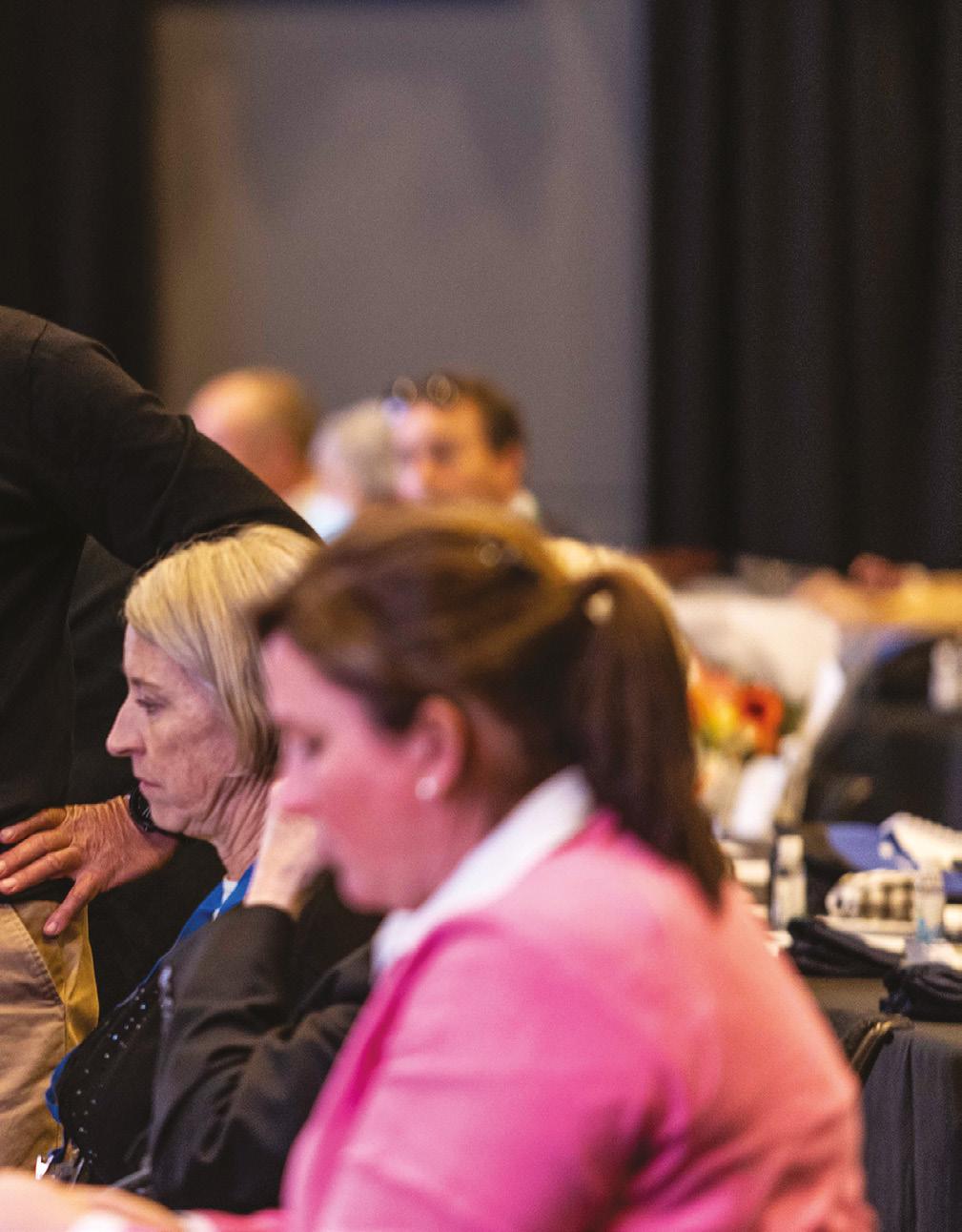
In past years the value of food and fibre production was top of mind in the national psyche. Australia’s prosperity rides on the sheep’s back, and PIEFA aims to rekindle this vision through a variety of web-based and real-world resources. Its Primezone web portal delivers hundreds of curriculum-aligned, high quality, food and fibre teaching resources for students from Foundation through to Year 12; while the PrimeZone Academy eLearning portal allows students to undertake free, interactive courses.
PIEFA’s national Farmer Time program allows students to ask questions, take a virtual tour of a farm and participate in live sessions with primary producers, while the Career Harvest online portal provides students with a one-stop resource for career options, information on career pathways, scholarships and other opportunities.
One of the many challenges farmers face is finding an insurer who truly understands their business. WFI is one such insurer. For example, an unexpected or less understood challenge farmers face is underinsurance. According to WFI’s spokesperson, “with building costs increasing, inflation hitting our shores and assets prices growing, farmers who are not annually
reviewing their insurance coverage are finding themselves underinsured with potentially devastating impacts in the event of a total loss.”

To help farmers address this risk, WFI prioritises clear and transparent communication with its policyholders. “At the time of policy renewal and review, we ensure that farmers are promptly notified of any policy changes that could impact their coverage,” WFI’s spokesperson says.

“Furthermore, we understand that each farm and business have unique circumstances, and a one-sizefits-all approach may not be suitable. As a result, we offer a face-to-face model where our team can visit the farm or business to conduct thorough assessments and identify areas where policyholders may need to consider additional coverage. This personal interaction allows us to have in-depth discussions with farmers, understand their specific needs, and provide tailored insurance solutions that address their individual risks effectively.”

“With building costs increasing, inflation hitting our shores and assets prices growing, farmers who are not annually reviewing their insurance coverage are finding themselves underinsured with potentially devastating impacts in the event of a total loss.”
–WFI
While electricity prices and reliability are top of mind for farmers; exhibitor Essential Energy is focused on avoiding preventable accidents involving farming equipment and machinery encountering powerlines. The company looks after the poles and wires that deliver electricity to 95 per cent of NSW and parts of southern Queensland.
According to a company spokesperson, the greatest electrical safety risk on farm is machinery such as augers and harvesters encountering powerlines and power poles. The company is urging agribusinesses to take the steps necessary to protect the safety of themselves and their employees when working near powerlines and poles.
These measures include actively identifying the electrical safety risks present when starting work each day, installing aerial powerline markers and using the ‘Look Up and Live’ app. The app is a tool that includes information such as the location of overhead powerlines and imagery via an interactive geospatial map. The free app can be accessed by anyone from their computer, tablet or smartphone. l
SpraySMART has been appointed as a Smart & Skilled provider for the 2023/2024 year.

Call our Enrolment Centre on 1800 872 462 to see if you are eligible for fee free training. There are limited fee free places per course.

“We offer a face-to-face model where our team can visit the farm or business to conduct thorough assessments and identify areas where policyholders may need to consider additional coverage.”
–WFI

*names have been changed for anonymity
As the owners of most of the land that will house new renewable energy infrastructure, farmers are key stakeholders in the transition towards diversified and cleaner energy generation. Some farmers are getting on board, opening their gates to private energy companies in order to erect wind turbines and solar panels. While these deals offer income diversification opportunities, hidden costs are increasingly coming to the surface. With energy companies – or, more often, their contractors – entering private properties to install infrastructure, some farmers are now in uncharted territory, citing fears of biosecurity breaches and unexpected liability if projects do not go to plan.
Chair of the NSW Farmers Biosecurity Committee, Ian McColl has noted an uptick in members calling out the actions of energy companies and their contractors.
“There is either a lack of knowledge or a lack of care when it comes to these big companies engaging with private landholders to access their properties,” he says.
“They might not know how serious biosecurity is and the risk foreign vehicles pose, but after hearing various anecdotes from members, it also sounds like there is little incentive to actually care.”
The Farmer interviewed two landholders for this story. Both have chosen to remain anonymous for legal reasons. Jack* says the problem tends to start hundreds of kilometres away from the farm.
“These companies are looking at a map from their office in Sydney, and charting a route to access the location where they want to install infrastructure. They are not consulting us to check the conditions of the property – like whether it’s too boggy or the roads are usable,” he says.
“These big energy companies are hiring contractors, and the contractors are often hiring subcontractors themselves. While the big companies tend to have biosecurity policies, responsibilities tend to get muddied when the physical job gets passed down the line.”
New legislation came into effect in August 2019 to penalise anyone failing to comply with a landholder’s Biosecurity Management Plan. Penalties can include an on-the-spot fine of $1000 or a court-ordered fine of $220,000 for individuals and $440,000 for corporations.
Biosecurity Management Plans typically require visitors to limit contact with animals and plant matter, clean and check vehicles before entering a property, and contact the property owner before entering. The plan must be displayed by a landholder for them to assert a breach, and concerns can be reported to a Local Government Weed Officer or Local Land Services officer.

You wouldn’t wear dirty shoes in a house, so why are energy and mining companies taking dirty vehicles and equipment onto farms when installing infrastructure or undertaking exploration?
Jack* says that while these obligations exist, a weed infestation caused by accidental crosscontamination might only become known months down the track.
“You can’t know for sure that these companies are not bringing pest weeds onto your property, and you might not even find out until six months later. Then there is every possibility you could have that weed problem for the next 20 years.
“If there's a delayed weed outbreak on your property, how are you supposed to hold these companies to account? The contractors won’t be held liable because they are protected by the bigger companies. There is no incentive to show the utmost level of care, really.”
While there is a risk that land access issues will become more prevalent with the increase in renewable energy infrastructure across the state, such tensions have accompanied mining and exploration for years.
Michael*, a farmer based in south-western NSW, says the mining exploration company he signed an access agreement with had breached the biosecurity plan for his property on several occasions, and he had nowhere to turn to hold the company to account.
“The company would arrange for some vehicles to be inspected but would send other vehicles out uninspected,” he says.
“We regularly found uninspected vehicles travelling through our paddocks, as well as drilling
Traditional energy infrastructure, such as power lines, have long caused an uneasy relationship between landowners and energy companies; increased renewable resource roll-outs will only make this more prevalent.
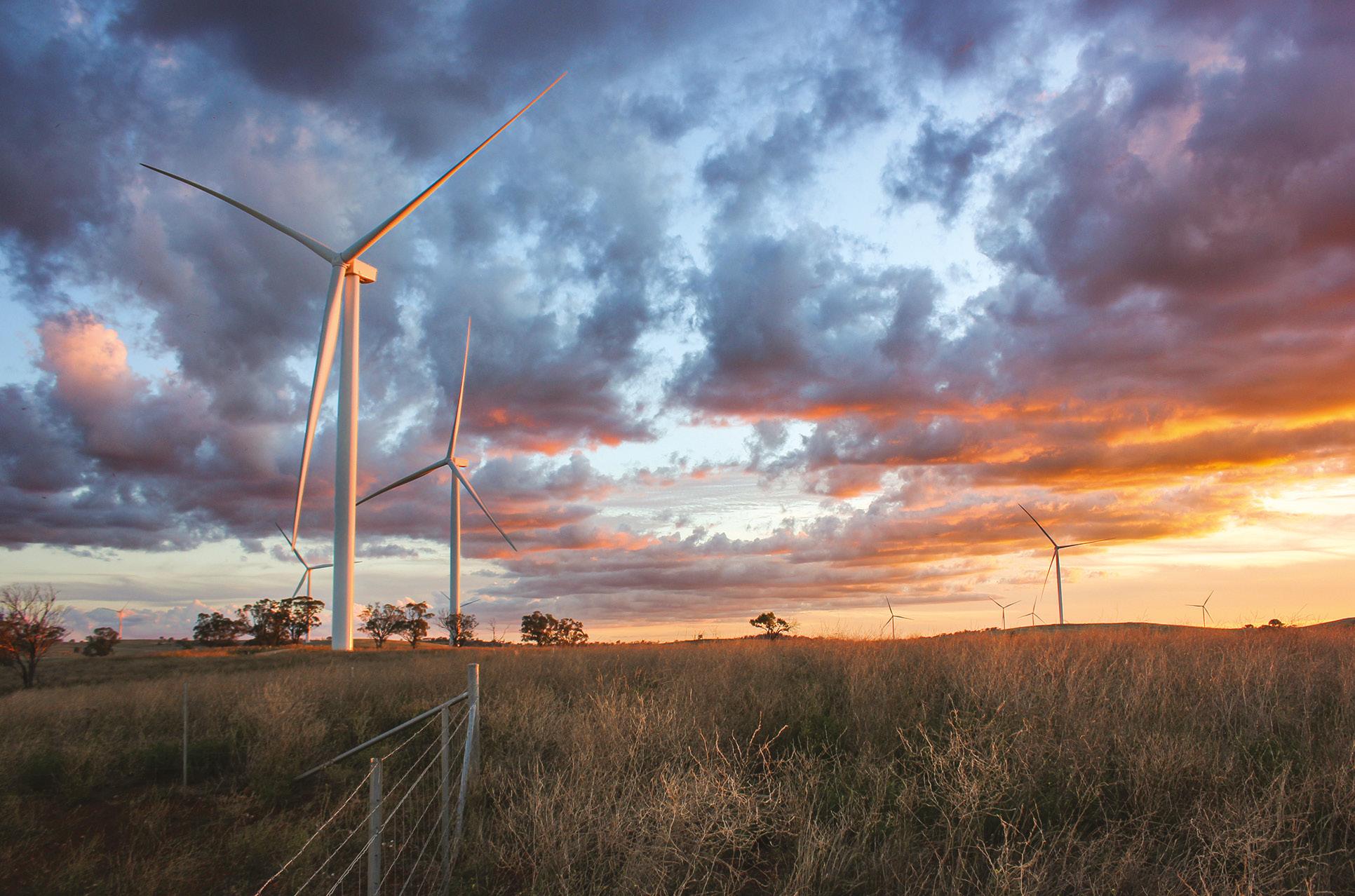

equipment and motorbikes that were brought in unchecked.
“When inspections were arranged, vehicles often failed. We found significant plant and soil material on vehicles, including under the chassis and on top of the spare wheel.”
Michael* recounts one memorable occasion when a drilling rig was inspected on his neighbour’s property prior to entering his own property.
“The rig had moved to my neighbour’s property from Stradbroke Island in Queensland,” he says.
“The rig had wasp nests and other insects on it, and the company washed it down directly onto our neighbour's paddock without any protection in place. This was about 500 metres from our boundary fence.”
This farmer’s relationship with the exploration company broke down after that event and he denied them access to his property.
According to him, the company then decided to travel through his property to access his neighbour’s property, despite not having an easement to travel there. These vehicles were uninspected.
After directly contacting the company to request it cease bringing vehicles and equipment onto his property, Michael* was informed he would need an injunction to stop the action.
“We reached out to the Local Land Services, NSW Police and Crown Lands for support, but no organisation offered much help,” he says.
“NSW Police tried to investigate the issue, but the exploration company did not cooperate, and the investigation stalled while the issue continued for more than 12 months.”
He says after making multiple complaints to the NSW Resource Regulator, investigations are almost complete, and the mining company finally stopped travelling through his property in January this year.
“To date we have not had an apology, compensation or any findings against this mining company for their actions,” he says.
“The only reason the company stopped travelling through our paddock is that they negotiated an access route into our neighbouring property through another neighbour, so the company now travels on the other side of our boundary fence.”
In Michael’s* case, the company’s use of his roads without an easement gave him grounds to dispute the company’s actions. However as Jack*, the other landholder interviewed by TheFarmerfor this article points out, services and utilities companies will typically have rights to access properties – which can complicate liability in the event of a weed infestation or other harm caused.
“The situation is not black and white. These companies have easement rights to be on your property. It’s not like a burglar robbing a store.
“Obviously that’s a big issue in the case of a delayed weed outbreak, but it can also be challenging for farms growing produce organically, as foreign matter can be difficult to trace.”
This farmer also says the relationship between farmers and energy companies could create a ‘David and Goliath’ situation in the event of a liability dispute.

“I am concerned that if we hold these projects up in any way, be it to undertake a vehicle washdown or request the vehicles don’t come onto the property, then we might wear the costs for time lost on the project.
“There is a lot of uncertainty in the farming community and we don’t have a great deal of support, particularly when the LLS is chronically understaffed.”
According to the NSW Department of Primary Industries’ website, the department is working with key utilities and service providers in the state to reach an agreement on how biosecurity practices will be managed when their employees and workers visit properties. l
“When inspections were arranged, vehicles often failed. We found significant plant and soil material on vehicles, including under the chassis and on top of the spare wheel.”
–MICHAEL* Farmer, south-western NSW
Pigs at the Refalo family farm have their own shelters to protect them from the elements.

At Refalo Free Range Pork in Canowindra, keeping things comfortable translates to a better product, making good business sense.

–
Words NANNETTE HOLLIDAY Photography RACHAEL LENEHANDespite most people’s vision of pig farming and the saying, ‘happy as a pig in mud’, David Refalo from Refalo Free Range Pork likes to do things differently at his 155-acre Bangaroo Ridge property in Canowindra. It’s not that their pigs don’t like mud, but his piggery avoids wallows and embraces sprinklers.
“Pigs cover their bodies in mud to keep cool and protect their fair skin from sunburn when it’s hot,” David says.
Over the past 15 years, David has developed a range of sustainable and innovative pig farming practices. His pigs not only roam totally free range across the pastures, but there are over 34 custommade shelters spread around the property, providing protection from Australia’s harsh elements without the need to wallow in mud.
David’s shelters are all fitted with sprinklers that can drop temperatures by up to 20 degrees during summer. David designed two shelters himself, the Farrowing Shelter and Dry Sow Shelter. The other two Eco Shelters on the property come from Adelaide.
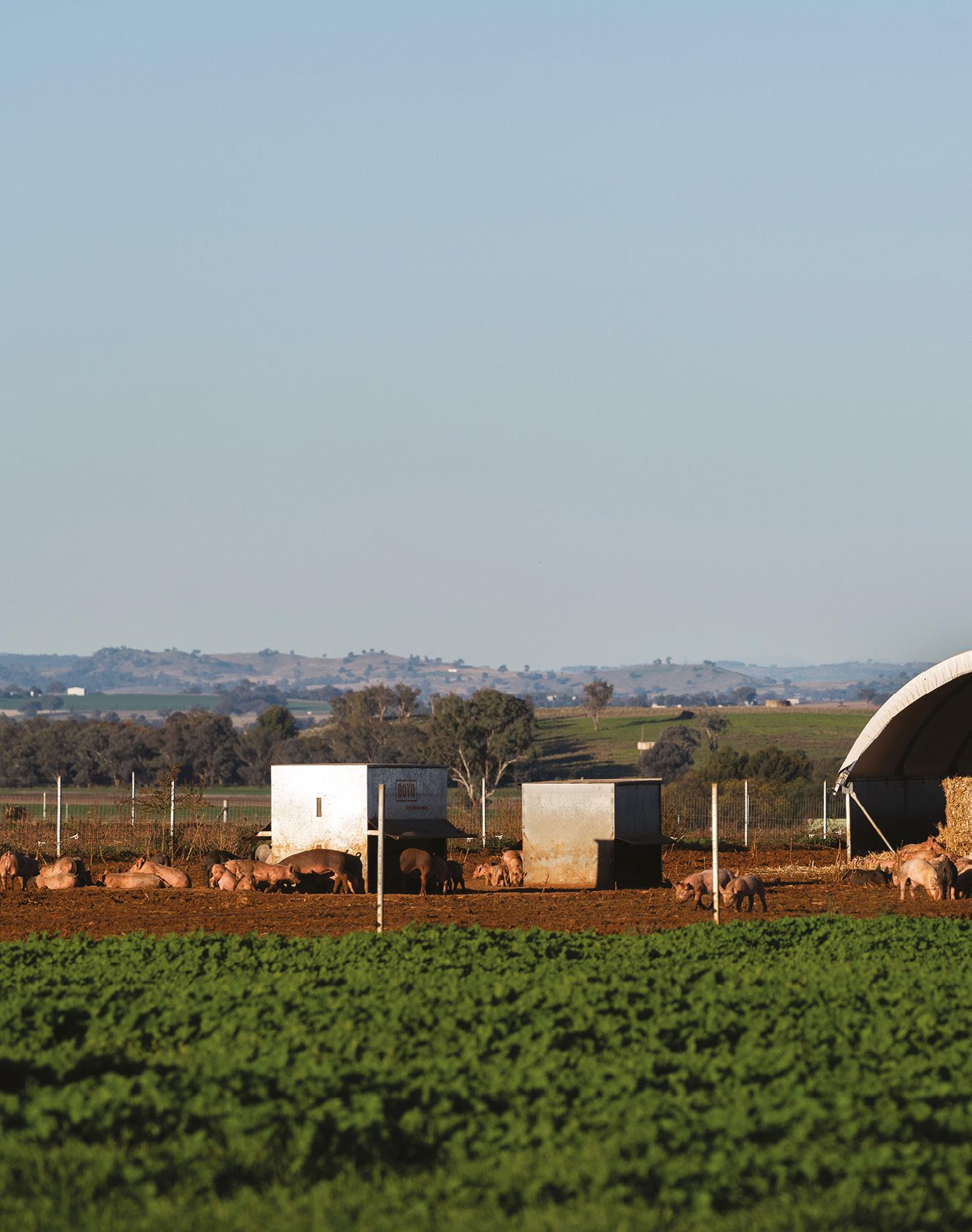
“The farrowing shelters are made from coolroom panelling with intensive sow flooring that keeps the piglets warm and dry during wet periods. When the piglets are warm and dry, they use their energy to grow, not keep warm,” says David. “The outside roof sprinklers maintain a comfortable temperature for the sows while ensuring the straw remains dry during summer.”
His other shelters have roof sprinklers, with moss sprinklers (or misters) underneath to keep the pigs cool and comfortable year-round. All the shed sprinklers are computer automated with adjustable settings to compensate for the varying heat throughout summer. David’s environmentally friendly approach to pig farming has created the perfect balance for his pigs, achieving a light pink, high-quality meat.
“The shelters significantly reduce the risk of sunburn and lower summer infertility rates,” he adds. “The pigs are much happier outdoors, resulting in better conditioning and higher production outputs.”
Bangaroo Ridge is a 100 per cent free-range pig farm, with 120 sows and around 800 pigs all up. When David bought the property in late 2016, it was a vineyard with two acres of timber cover and no structures other than a shed and small demountable office, which he made into a liveable flat for him and his then fiancé Sarah, whom he married in September 2020. In January 2017, he moved his 10 sows from his parent’s hobby farm on the outskirts of Sydney.
Today, more than 55 per cent of the vineyard has been cleared for his piggery, and he’s built a fourbedroom all brick home on the property. Like his father, David is a qualified bricklayer, but farming was always his true passion. Sarah and David now have a 10-month-old daughter, Margretta Georgina.
“Georgina was my grandmother’s name,” says David. “Her stories of the family farm in Malta developed my curiosity about pig farming. I then
read every book I could get my hands on about raising pigs.”
Refalo family pig farming in Malta extends deep into the 1800s. When David’s father’s grandparents came to Australia in 1955, they established a 10-acre vegetable market garden with some pigs in Horsley Park. But when David’s grandfather passed away, his grandmother moved in with his parents, Julian and Maria, who had a 5.5-acre property in Kemps Creek, where they grew vegetables, selling them at the Sydney Markets.
“I never knew my grandfather or had any association with pigs,” says David. “But for three years, I hatched eggs and raised chickens, geese, and ducks before Dad relented and gave me a pig when I was 13.”
David learned how to artificially inseminate his pig, and within no time, he was selling his piglets through the local Trading Post paper and making a small fortune.
Twenty-five of the 120 sows farrow every month, providing plenty of new faces on the farm (top); on-farm grazing is supplemented with various grains, handfed to the pigs daily (above).
“Dad sectioned off just two acres of the hobby farm for my pigs,” David explains. “I’ve always free-ranged them. I believe it produces a different-flavoured pork.”
To create the best all-outdoor pigs for his herd, David unsuccessfully experimented with the genetics of his original Large White, Landrace and Duroc pigs. A friend then told him to try a ‘Hamrock’, an F1 Hamshire Duroc cross.

“This resulted in a black sow with a mostly white band over their shoulders,” he says. “Their tougher skin was perfect.”
Most of David’s sows are now Hamrocks, with other F2 hybrids he’s developed – Hamreds and Hamwhites – and the pure line Durocs, Large Whites and Hampshires. His coloured pig varieties are well suited to outdoor conditions.
“With our batch farrowing system, 90 per cent are artificially inseminated. We mainly use large white semen, which gives us a white pig when joined


“The farrowing shelters are made from coolroom panelling with intensive sow flooring that keeps the piglets warm and dry during wet periods. When the piglets are warm and dry, they use their energy to grow, not keep warm.”
–DAVID REFALO Farmer, Refalo Free Range Pork
to a coloured hybrid sow. Most butchers we supply prefer a white carcass pig. We source Future Pork Boar semen through Sabor in South Australia. We have six boars to catch any sows returning to heat in their dry sow paddocks.”
David rotates the pigs between the paddocks every six to 12 weeks, depending on the native pasture quality. The on-farm grazing is supplemented with various grains, including wheat, barley, lupins and soybean, mixed and handfed to the pigs daily.

“I buy in over 350 tonnes of grains a year,” he explains. “We mix this into seven different diets to suit the pig’s age groups, as they all have a particular diet.”
Of the 120 sows, 25 farrow every month, giving birth to around 8-14 piglets each. The piglets are weaned between five and six weeks, and within a week, the sow returns to heat.

By 16 weeks, the finisher pigs weigh around 80kg. Every Monday, David takes a truckload of 35 to 45 pigs to the abattoir in Cowra for processing. Before Covid, the majority of David’s pigs were processed as suckling pigs for restaurants. Today, only 20 per cent are suckling; most are now heavy pigs for pork and smallgoods production.
Refalo Free Range Pork (RFRP) is supplied to more than 20 butchers and speciality food stores throughout NSW and ACT and is also available on David’s RFRP website. Griffith Butchery in Canberra and Dalika Small Goods in Sydney make a vast range of smallgoods, from spicy salami, pepperoni, prosciutto and cabanossi to bacon, ham and other sliced meats.

Cranky Sow Small Goods is named after the less forthcoming females (far left); A farrowing shelter provides the right conditions for a sow and piglets (left); David with his grandmother, Georgina Refalo (top right).
David’s website smallgoods range is labelled ‘Cranky Sow’, after his least friendly females. He also sells fresh pork and smallgoods direct to the public.
Richard Odell, the owner of Griffith Butchery, has been sourcing David’s RFRP pigs for the past three years.
“Our award-winning pork comes down to Dave’s hard work and free-ranging efforts,” says Richard.
“All our legs of ham are Refalo. The skin is thicker and softer; the meat-to-bone ratio is higher, the colour lighter and more flavoursome.”
In 2018, the NSW Farmers Pork Committee –a voice for the pig industry – invited David to join.
The committee comprises eight to nine members across the pork industry, from big businesses to small farm holdings like David’s. David is the only free-range farmer, the longest-serving and youngest committee member.
While African swine fever (ASF) didn’t reach Australia in late 2019, the committee was instrumental
in arranging community advisory meetings in Young, NSW, focusing on biosecurity and pre-planning. More than 100 people attended, demonstrating the importance of the issues farmers face.
“Illegal importation of contaminated pork is Australia’s biggest issue,” says David. “The virus can survive for many months in smallgoods. If backyard pig owners feed their animals swill – food scraps that could contain the virus – the infected meat only needs to be fed to one pig, and we could have a huge problem.”
Between December 2021 and March 2022, several pork farmers had the mosquito-borne Japanese encephalitis virus affect their herds. Initial testing showed nothing. Sows were aborting, and young piglets were losing condition and dying within a week. It bewildered farmers. David says it’s the worst disease he’s experienced in 19 years of pig farming.
“Our pigs weren’t responding to antibiotics. It shows just how fast things can change with livestock. Fortunately, we haven’t seen a return of the virus this past summer, but we are always vigilant.”
Raising pigs isn’t easy. It’s continuous hard work, but David has it in his genes and has many more grand plans: more land, more pigs and becoming one of Australia’s largest family-owned free-range pig farms. l


Over the past 12 months, the NSW Farmers Pork Committee has been engaging strongly with industry and stakeholders alike on the National Livestock Identification System (NLIS) requirement to tag pigs under 25kg. A letter was written to the former NSW Agriculture Minister, advocating for a review of the NLIS standards and outlining the Committee’s request. The Committee continues to remain engaged with NSW DPI and APL on the literature review being undertaken on this matter and supports the practice of tattooing as a legitimate alternative to ear-tagging, as tattooing promotes higher OH&S, traceability, and animal welfare outcomes.
In 2022, the Pork Committee was made aware of the consultation by the NSW Environment Protection Agencies (NSW EPA) to review the EPA Climate Change policy. The draft policy suggests setting emissions targets for license holders and the NSW EPA holding license holders to these targets. NSW Farmers sent a letter to the NSW Minister for Environment and Heritage stating our position to have agriculture exempt from this scheme. The Pork Committee has engaged with the NSW EPA CEO on recent farm tours, highlighting industry concerns and the substantial progress and investments made by the pork industry to address emission outputs. Although the Committee remains concerned with the EPA’s proposed approach, it remains highly engaged in ongoing robust and constructive discussions with the NSW EPA CEO and staff about this policy.
“All our legs of ham are Refalo. The skin is thicker and softer; the meat-to-bone ratio is higher, the colour lighter and more flavoursome.”
–RICHARD ODELL Owner, Griffith Butchery
The largest political party represented in Holland’s Senate is the BBB, the Farmer-Citizen Movement only founded in 2019 and already holding enough seats and power to directly influence national policy.
Words IAN NEUBAUER

HHere, there and everywhere, farmers are coming under fire for the harmful environmental effects of synthetic fertilisers like ammonium.
In New Zealand, where nitrous oxide makes up about 6 per cent of greenhouse gas emissions, and run-off from dairy farms is turning some waterways green, the government is planning to tax agricultural emissions in a bid to combat climate change – a world-first that Federated Farmers, the Kiwi version of the NFA, says will “rip the guts out of small-town New Zealand” and see thousands of farms replaced by trees.
In Canada, the government has targeted a 30 per cent reduction in fertiliser emissions by 2030 as part of its climate change plan. But farmers are warning the goal is too ambitious, especially at a time when Canada is being asked to produce more to help address global grain shortages caused by Russia’s invasion of Ukraine.
In Sri Lanka, a blanket ban on chemical fertilisers in 2021 turned a tropical country that normally exports rice, its principal carbohydrate, into an importer of rice.
And then there is the Netherlands – the world’s second-largest agricultural exporter after the US –where the government wants to reduce nitrogen emissions by half by 2030. It blames synthetic fertilisers and an overload of animal manure for pollution levels that breach EU regulations, and wants to buy out thousands of farms in what it describes as an “unavoidable transition”.
Dutch farmers are not taking the proposal lying down. But instead of lobbying the government to safeguard their livelihoods, as is occurring in other countries, farmers in the Netherlands are taking over the government.

“We can’t fight for the past. We need a plan for the future and how to make money through biodiversity, carbon offsetting and a little bit less milk.”
–HELEEN LANSINK-MARISSEN Organic dairy farmer
In March, the Farmer-Citizen Movement or BBB, a conservative, right-wing, populist party, made global headlines after taking 17 out of 75 seats at provincial elections. In comparison, the People’s Party for Freedom and Democracy led by the Netherlands’ Prime Minister since 2010, Mark Rutte, won only 12 seats, making the BBB the largest party in the Senate, the Netherlands’ upper house. This gives it the power to join with other parties to veto the Rutte government’s nitrogen-mitigation plan.
“This vote is obviously a statement from a big chunk of the voters to say no to that policy,” said Tom-Jan Meeus, a Dutch political commentator.
“Nobody can ignore us any longer,” said Caroline van der Plas, the agriculture journalist who founded the BBB in 2019 and was unanimously chosen as its
leader in 2020. “Voters have spoken out very clearly against this government’s policies.”
The party has also attracted international support from some on the far right who see climate action as a new form of tyranny imposed upon hard-working citizens by out-of-touch left-wing governments. Supporters include France’s leader Marine Le Pen and former US President Donald Trump, who told crowds at a rally in Florida last year that “farmers in the Netherlands of all places are courageously opposing the climate tyranny of the Dutch government”.
The BBB and its supporters in the Netherlands are only getting warmed up. Next year they will contest the European Union elections. If successful, they will introduce an agenda to reduce the power of the EU regulators to unilaterally tell member states how
The farmers of the BBB use a red bandana as a kind of emblem of their membership.
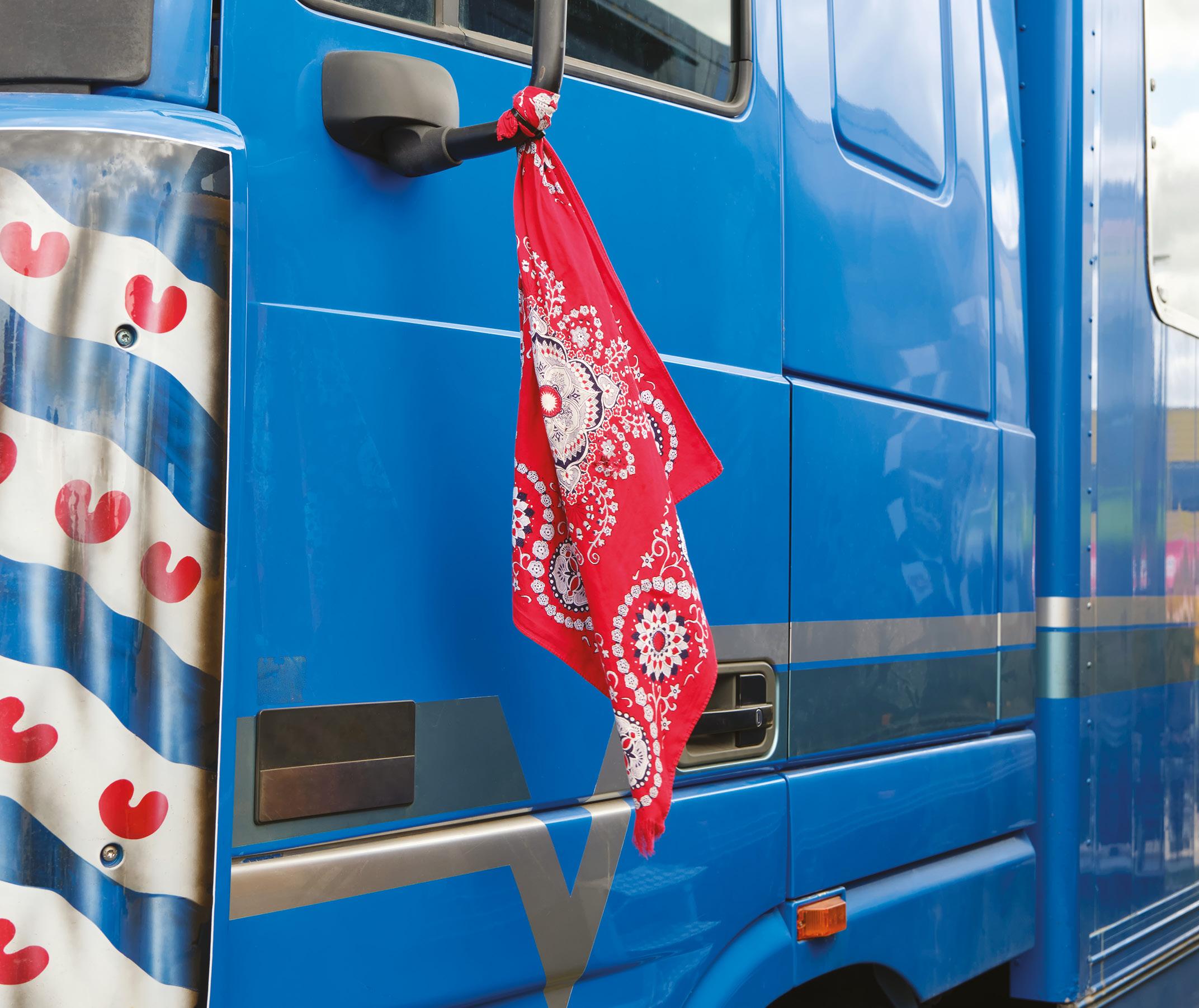
to take care of their soil. The BBB also wants the kinds of restrictions that the Rutte government conjured for agriculture, applied to sectors such as construction, transport and energy that they say cause much more damage to the environment but are shielded from reforms by political donations and lobbying.
But are farmers really being unfairly targeted? In the Netherlands, at least, that does not appear to be the case. Agriculture is responsible for 40 per cent of the nitrogen emissions in the country – more than any other sector. That’s because, to produce so much food in such a small landmass (the Netherlands’ is less than 0.5 per cent of the size of Australia’s) farmers must use relatively large amounts of fertilisers and constantly till the same land without allowing it to regenerate. They also hold 100 million head of cattle, chickens and pigs – more than four times the animal density of France or the UK.
An associate professor of food and agricultural policy at Wageningen University, a research centre that focuses on healthy food and living, Jeroen Candel says the BBB party “represents farmers’ shortterm economic interests and is not taking the impacts of climate change seriously enough”.
Some Dutch farmers agree and support the Rutte government’s plan to change the country’s approach to agriculture. “We can’t fight for the past. We need a plan for the future and how to make money through biodiversity, carbon offsetting and a little bit less milk,” organic dairy farmer Heleen Lansink-Marissen told The Guardian
“The message now is that this needs to be fixed, no matter what,” says MP Tjeerd de Groot of the Democrats 66 party, a coalition partner of the Rutte
Standardising best practice for things such as accurate usage of fertiliser, has been widely accepted by industry.
government. “We have to move away from the low-cost model of food production.”
Peter van der Sleen, an ecologist at Wageningen University points to Switzerland, where the government prioritises public health over food production. “They undertake less production but higher prices, because they think this is valuable. That is a direction the Netherlands could try,” he told Germany’s DW News, adding: “But this would mean food prices would be higher.”
Between the former Sri Lankan government’s blanket ban on synthetic fertilisers and the BBB’s businessas-usual approach is a middle ground inhabited by pundits searching for new and creative ways to prevent the overuse and negative consequences of synthetic fertilisers.
They have reason to be optimistic. Research published in peer-reviewed scientific journals indicates nitrogen recovery in global cropping systems is approximately 50 per cent. The other 50 per cent of nitrogen remains in soils or leaves cropping systems through the air, surface water, or groundwater pathways. That means farmers can, in theory, reduce the amount of fertiliser they use by half and still produce the same amount of food –given the right tools and technology.
In Canada, industry-accepted best practices for fertiliser management, such as using the right kind for particular soils, applying it at the right time of year and in the right amounts, are being standardised.
“By helping more farmers become aware of these practices, the industry could potentially achieve a 14 per cent reduction in emissions by 2030,” Karen Proud, CEO of Fertilizer Canada, told CBC News

Here in Australia, scientists are experimenting with methanogen inhibitors like seaweed that have been shown to reduce methane by 80 to 90 per cent. In New Zealand, a vaccine is being developed to attack methane-producing microbes in cows, which could reduce emissions by as much as 30 per cent.
“The aim is to find practical, cost-effective, farmerfriendly solutions,” DairyNZ’s General Manager for Sustainable Dairy, David Burger says.
Above and beyond Dutch farmers’ “short-term economic interests” is the unputdownable fact that half the world’s population eats food grown using synthetic fertilisers. In lieu of solutions that allow them to grow food more efficiently, restricting fertiliser sales and animal density in the Netherlands will likely see more land converted to farms in countries with less ambitious environmental policies. For this reason, many stakeholders believe more holistic solutions are required.
“The nitrogen problem is a complex one, involving many different interests that sometimes appear to clash,” says Tia Hermans, a policy-oriented researcher at Wageningen University. “Much can be won by not just focusing on nitrogen values, but by looking at the situation as a whole.” l

Twenty metres of cling wrap, eight loaves of bread, three kilograms of ham, one jar of pickles and countless pre-packaged snacks: during their first harvest together, this was an inventory of the contents of Camilla Herbig’s husband’s lunchbox. She was working full-time travelling across western NSW as a social worker, and was not prepared for the busiest time of the year on the farm. At the end of five weeks, they were both exhausted and craving a decent meal. She also felt guilty.
In 2020, as she and her husband began planning for their biggest harvest in four years, Camilla decided to start an Instagram page called ‘Tractor Snacks’ (@tractorsnacks) where she could share recipes, tips and ideas for how to efficiently prepare delicious healthy food to eat on the tractor.
“It really began as a tool to give inspiration to other farm families who were in the same boat as us and it was also a way to keep me accountable,” says Camilla. “I love cooking but I’m no gourmet chef. I just started putting together old recipes that just work for good, hearty country food, and then I started suggesting time-saving tips such as doubling or tripling recipes, and freezing single portions that can be easily pulled out of the freezer in the early morning.”

“For many farming households, women are no longer solely working on household tasks and raising children. Many, like me, are working off-farm, or running their own small businesses and/or also working in the farming business,” says Camilla. “I believe that while we look for quick and easy solutions, we also should not compromise on the health component.”
The name ‘Tractor Snacks’ came from her husband, who wrote it on the shopping list one day, hoping for pre-packaged lunchbox snacks like chips and biscuits. Never did he realise that it would turn into this new initiative. Her Instagram account has exploded and now has more than 2,600 active followers. >
Hearty food that fuels harvest time for one Central West farming family, is now a social media success story.
–
Words SUSAN GOUGH HENLY Images KIRSTY FISHER
“I love cooking but I’m no gourmet chef. I just started putting together old recipes that just work for good, hearty country food, and then I started suggesting time-saving tips such as doubling or tripling recipes, and freezing single portions that can be easily pulled out of the freezer in the early morning.”
Camilla is a fourth-generation farmer who lives with her husband Jason and daughter Sophie on their broadacre cropping farm in Collie, in the state’s Central West. She is also a social worker with the Rural Adversity Mental Health Program in Western NSW, where she does community outreach and training on mental health and wellbeing, and links people in remote areas to mental healthcare services.
As a member of the Dubbo Show Society and a volunteer with multiple community organisations, agriculture is her big love. She’s equally passionate about reducing the impact of mental illness in rural and remote communities.

“As a social worker, I’m interested in understanding all the contributors to good health,” says Camilla. “We
TO YOUR GOOD HEALTH Camilla’s dual work interests in broadacre farming and social work combine to give Tractor Snacks a balanced view of diet and wellbeing.
know that diet, exercise, sleep, social connections, down-time and hobbies are all important for good health, however many of these are really tricky to maintain at peak times on farm, particularly during sowing and harvest. A healthy diet is one element which I can influence and, while I haven’t done formal research about this, I’ve learned anecdotally that a nutritious, varied and interesting diet can assist our bodies with effective concentration, problem solving, conflict resolution and safe physical exertion especially during times of stress.”
“We’ve had our fair share of adversity through droughts, fires, floods, and mouse plagues (yes, plural). But one constant through it all is a love of food and the way it brings people together.”
She started focusing on how food could play a bigger role in wellbeing and decided to put more effort into lunchboxes and tractor dinners.
“Tractor Snacks is more than a bunch of random recipes but it isn’t about putting a gourmet restaurant into a lunch box either,” says Camilla. “It’s about providing healthy and varied heartwarming, bellyfilling, nutritious comfort food for busy farm workers to keep them going through the long hours and to have something to celebrate when the job is done.”
“Mental and physical health is so closely linked with productivity,” says Camilla. “I genuinely believe I can see a difference in my husband’s wellbeing and motivation, depending on what’s in his lunchbox and tractor dinners. When there are fresh options and plenty of variety in the meals I make, he’s in a better mood with a clearer mind… and the lunchbox returns empty.”
“It’s not only about what goes into the lunchbox but also how it’s packaged. Ideally the recipes are
“It’s about providing healthy and varied heartwarming, belly-filling, nutritious comfort food for busy farm workers to keep them going through the long hours and to have something to celebrate when the job is done.”
“I’m sure we’ve all got nostalgic favourite family recipes from our childhood that never grow old. My mum made this a lot for weekend lunches when I was a child using a recipe from a beloved neighbour, always known as Mrs Monk’s Zucchini Slice. Still to this day, it is a staple for our family and often used as a great gift when dropping a meal to a new mum or family having a rough time. Maybe it’s just us, but it always feels filled with love.”
3 cups grated zucchini
3 rashers bacon, diced
1 large onion, diced
1 cup SR flour
5 eggs, lightly beaten
1 cup grated cheese
½ cup oil
Salt and pepper
Combine all ingredients. Pour into a greased dish. Bake in a moderate oven for 30-40 minutes until brown.
May be served cold in lunchboxes or warm with a salad.
“The original recipe is listed above, although you may substitute 3 cups of any vegetables you have in the fridge - spinach, grated carrot, corn, shallots, tomatoes and so on.
“I have shared this special recipe with plenty of friends who have put their own spin on it, making it gluten free (GF flour) and dairy free (omit cheese) and changing vegetables.”
simple to make, healthy and delicious to eat and are also easily frozen, transported, and reheated. They must be easy to eat as wraps or with forks, as farmers often are working with one hand and eating with the other,” she says. “We also bought an inexpensive 12V oven from a car accessory store. You just plug it into the cigarette lighter and you can warm up sausage rolls or pinwheels and toast sandwiches.”
Recently, Camilla has also been hired by NSW Farmers to create Instagram videos that showcase how simple and delicious it is to follow recipes from TheFarmermagazine, which highlight local produce from around the state.

Some of Camilla’s most popular recipes include zucchini slice, pizza pinwheels, Greek chicken
tray bake, and lemon coconut slice. You can find some of these recipes on her Tractor Snacks website ( tractorsnacks.com.au) or you can buy her Harvest Hacks cookbook ($22 print version or $12 e-book version) on the website. The cookbook also includes lots of handy tips to make food preparation easy and efficient on a busy farm.
The proof, as they say, is always in the pudding. So, what does Camilla’s husband Jason think of her healthy, homemade tractor snacks?
“It’s so good to open the lunchbox and find so many different snacks when things get really busy on the farm,” he says. “It’s great to have such a variety of things that are tasty and easy to eat on the run.” Enough said. l
Knowing that harvest time means eating onehanded and snacking on the run, packaging a lunchbox is part of the process.
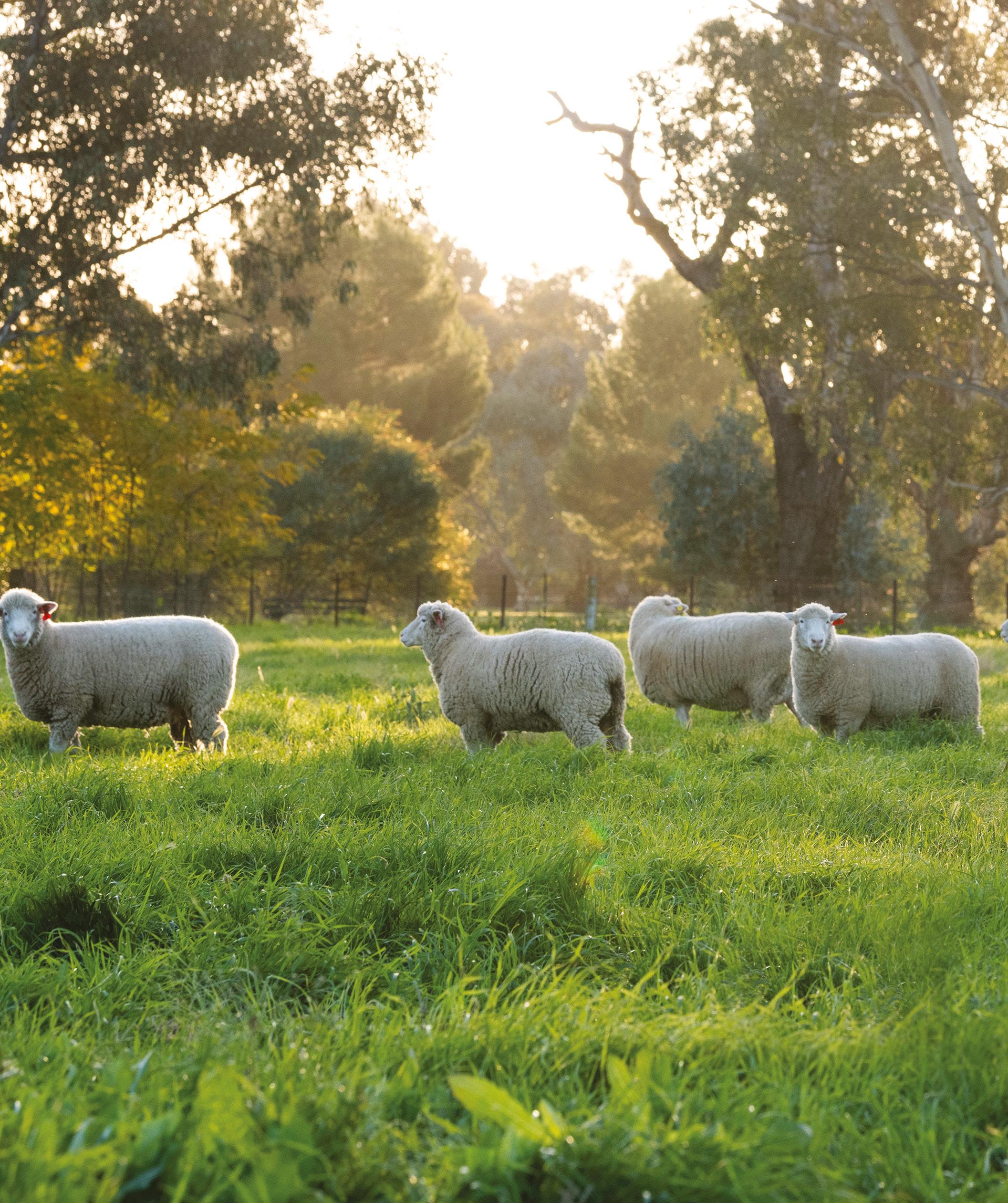
Inspired by his grandfather Laurie, young farmer Sam Williams is forging his name into the history books of Poll Dorset breeding in Australia on a small farm in the southern Riverina.
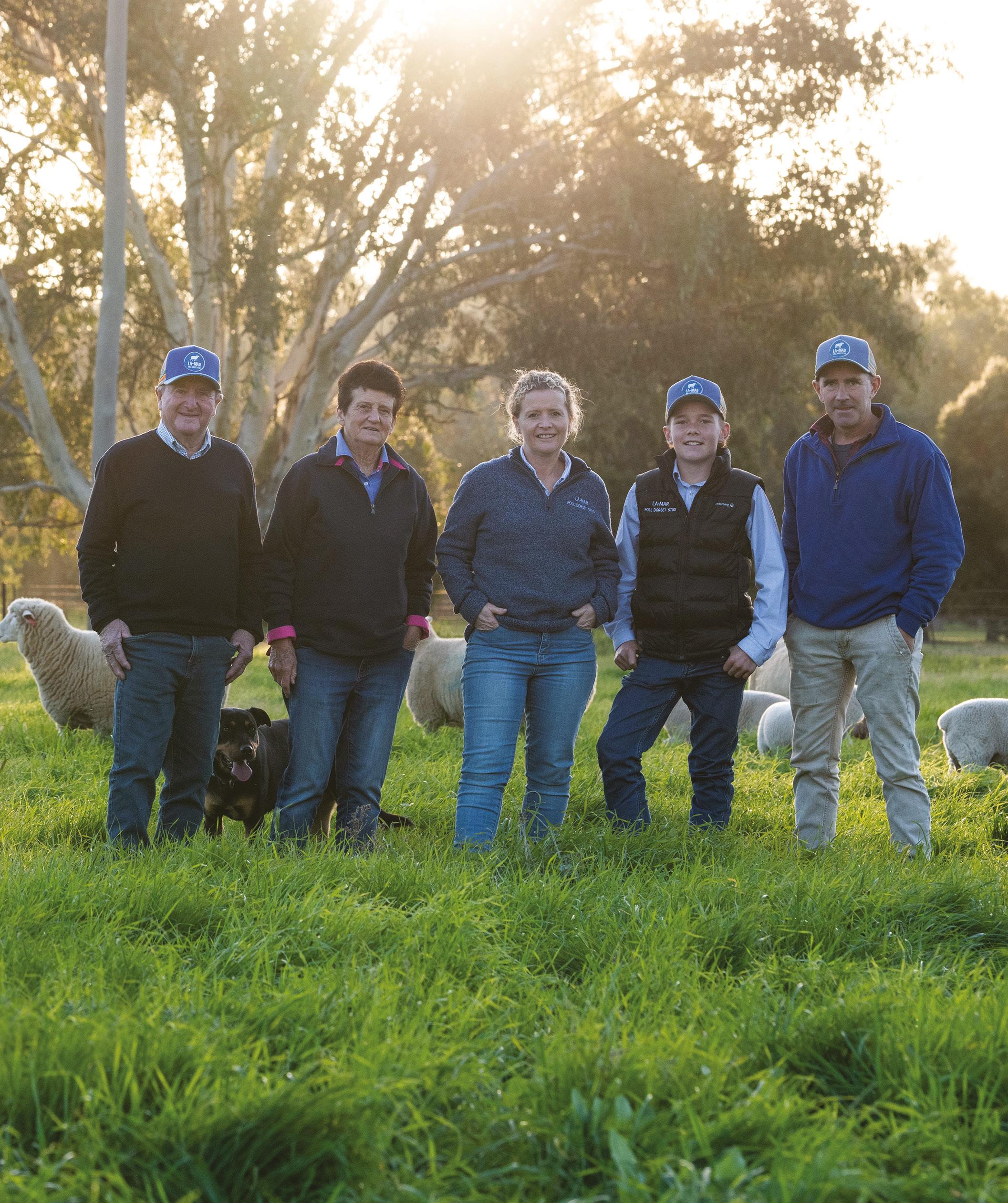
Laurie established his own sheep stud back in 1957 at the age of 15, and now Sam (pictured with Laurie, near right) is continuing the tradition – at age 14.
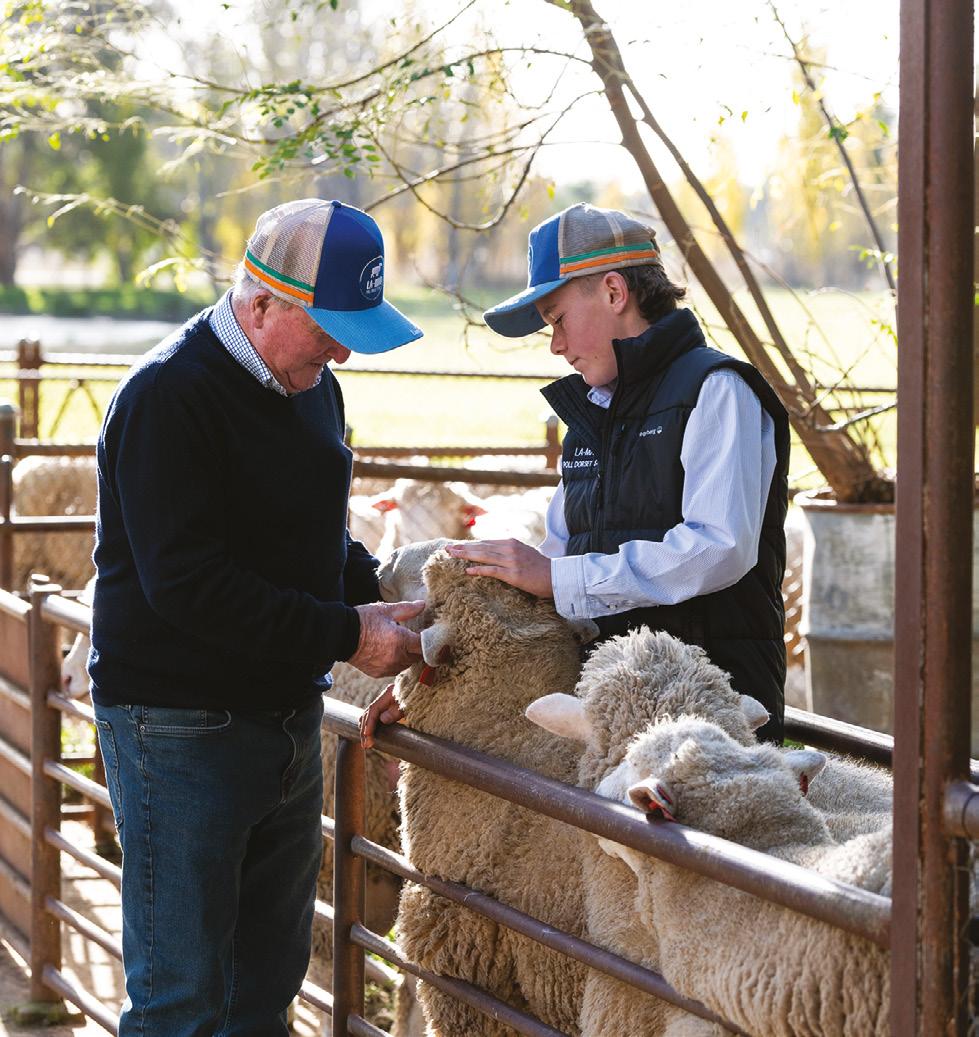


Two Poll Dorset rams named John and Pat are helping young farmer Sam Williams revive a generational farming story that was started by his grandfather in 1957.
The 14-year-old high-school student has started his own La Mar Poll Dorset stud on his parents’ small farm at Culcairn in the Murray region, following the footsteps of grandfather Laurie who established a sheep stud at age 15.
The stud’s name is tribute to Sam’s grandparents, with the ‘La’ in the moniker standing for grandfather Laurie and ‘Mar’ referencing his grandmother Marie.
“We bought 26 stud ewes in 2021 from the Gartlee Poll Dorset stud that my grandfather started, and another 20 ewes from one of my grandfather’s mates, Pat Flanagan, at the Blauvet stud near Bacchus Marsh,” says Sam.
“I then got a ram from Gartlee to go with Blauvet ewes, and a ram from the Blauvet to go with Gartlee ewes.”
“One is named John after John Sinclair at Gartlee, and the other is named Pat after Pat Flanagan.”
Sam’s first lambs dropped in April last year and all 52 of them have flourished on his family’s 42-hectare farm, with the help of improved pastures and supplementary feeding with a feed mix of lupins and barley.
Sam says he is looking forward to his first dose of income this year, selling 19 male lambs and some of the female lambs.
“We will keep 25 of the best ewe lambs to build up the breeding flock. I already have 59 breeding ewes, and the plan is to get that up to between 100 and 120. That will keep us busy enough on this little farm.”
That target is well in sight, with more than 80 lambs born in April and May this year.
“We’ve got a great set-up with the ram shed. There are yards inside so we can put the sheep inside at night when they are lambing to protect them from foxes and wild dogs,” he says.
“The ewes have their lambs in the paddock and then we put them in the shed each night for the first week and a half.”
Sam says the persistent wet weather in the last two years has been the biggest challenge in managing the flock’s health and wellbeing.
“Like everyone else, we have had some hoof troubles. The next biggest challenge is selling some. I know I’ve got good sheep, but I have to get out there and promote that,” says Sam.
“I am always learning new things, and I try and gather as much information as I can from other Poll Dorset breeders on how to market and assess young sheep.”

That includes Sam’s grandfather Laurie, who regularly makes the trip from Myrniong, near Ballarat in Victoria, up to Culcairn.
“John Sinclair and Pat Flanagan have also been a great help. Andrew from Valley Vista Poll Dorset has also been helping me out with honest advice on judging and showing stock.”
Sam won the junior judging competition at the South West Region NSW Poll Dorset youth day last year, which led to a stint as an associate judge at the Australasian Poll Dorset Championship show and sale.
While Poll Dorset sheep are destined to be a big part of Sam’s farming future, he is already eyeing off other agricultural pursuits as part of a goal to be a full-time farmer.
“I like pretty much all of agriculture really, but broadacre cropping and growing cotton really interest me. Next term we are doing food tech and agriculture, which I am excited about.”
Sam’s parents, Rod and Marita, are a source of much inspiration and support.
“My parents do so much for me; they’re unbelievable help. Mum has been showing me how to do the bookwork and dad’s always helping out. I could not do it without them,” Sam says.
While Marita comes from a farming background, Rod is new to life on the farm and admits to being a novice when it comes to sheep.
“Sam knows way more than me. He can identify every ewe and every lamb in the paddock just by looking at them. It blows my mind,” he says.
“I have learned a lot about the animal husbandry side though, and can help with fixing up the yards and the shed.”
Rod and Marita moved from near Ballarat to their small farm at Culcairn as part of an overall lifestyle change in 2021.

“Like everyone else, we have had some hoof troubles. The next biggest challenge is selling some. I know I’ve got good sheep, but I have to get out there and promote that.”
Sam Williams
Rod says Sam’s growing passion to follow in his grandfather’s footsteps also played a part in the decision to buy a farm.
“We’ve always liked the Riverina region, and Marita found this farm called Round Hill for sale that was too good to miss, which was part of the historic Round Hill Farm,” Rod says.
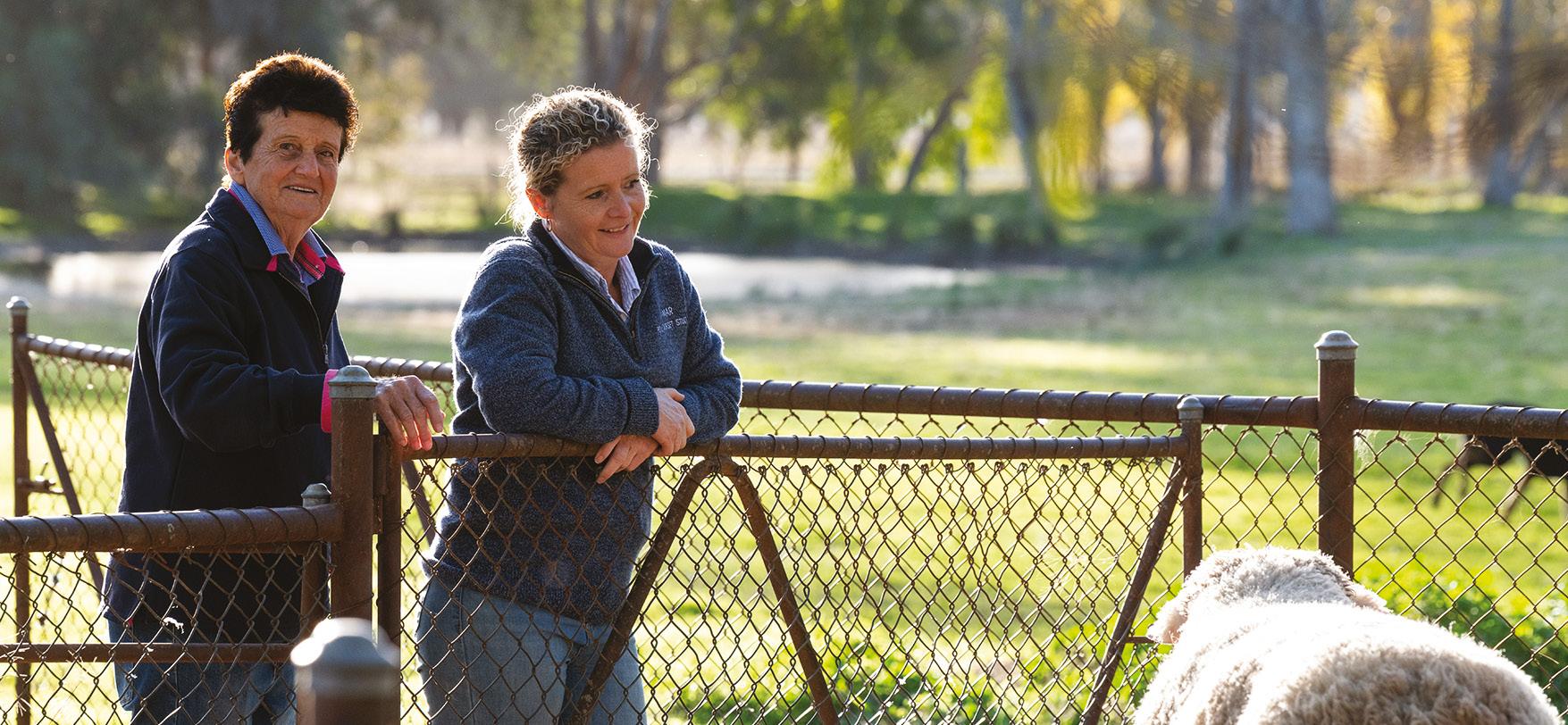
“It already had great infrastructure for sheep handling. Finding this place has really enabled Sam’s dream to be a reality.”
Rod, who works in the construction industry, is excited by the challenge of working on the homestead and restoring the ram shed to its former glory.
Settled by the Henty and Balfour families in 1846, Round Hill was one of the most renowned sheep properties in Australia.
“There is a lot of work to do in restoring the ram shed. It’s a unique building and was clearly built in a time when there was a lot of money.”
Sam’s grandfather, Laurie Thompson, is proud his passion for Poll Dorset sheep has been bestowed onto his grandson.
The fourth-generation farmer is a life member of the Australasian Poll Dorset Association and has been involved in showing and judging the breed for 50 years.


Laurie started a Dorset Horn stud in 1956 at the age of 15 on his parents’ dairy farm at Myrniong before
establishing the Gartlee Poll Dorset stud in 1967. The stud, its sheep and the farm were sold five years ago before Sam expressed his dream to have a Poll Dorset stud.
“Sam said to me one evening that he would like to do what I did in life and breed stud sheep. He was serious, so I said you’d better get Dad to buy you a farm then,” Laurie says.
“He asked if I would help, and my answer was ‘of course’. I was thrilled to know that he was keen to have a go. If I had known earlier, I would not have sold all the sheep.”
That regret was soon pushed aside when Sam asked if they could try to buy some of Laurie’s Poll Dorset bloodlines from the Gartlee stud, which is now run by the Sinclair family at Yea.
“I still do some sheep classing, so we got some young ewes from the Sinclair family and some from Pat Flanagan to start his breeding flock on the new farm at Culcairn. We dipped into Sam’s piggybank to buy them, with the help of funds from mum and dad,” says Laurie.
“For a kid of 14 years old, he is doing extremely well. It’s a terrific opportunity for him to gain a huge amount of experience, at a young age, in animal husbandry and the financial side of running a farm.
“It’s a wonderful little farm at Culcairn to get started, and Sam has got some very good lambs to sell this year. I am a bit biased, but I am very proud of what he is doing.” l
“We’ve always liked the Riverina region, and Marita found this farm called Round Hill for sale that was too good to miss.”
Rod Williams
COME FULL CIRCLE
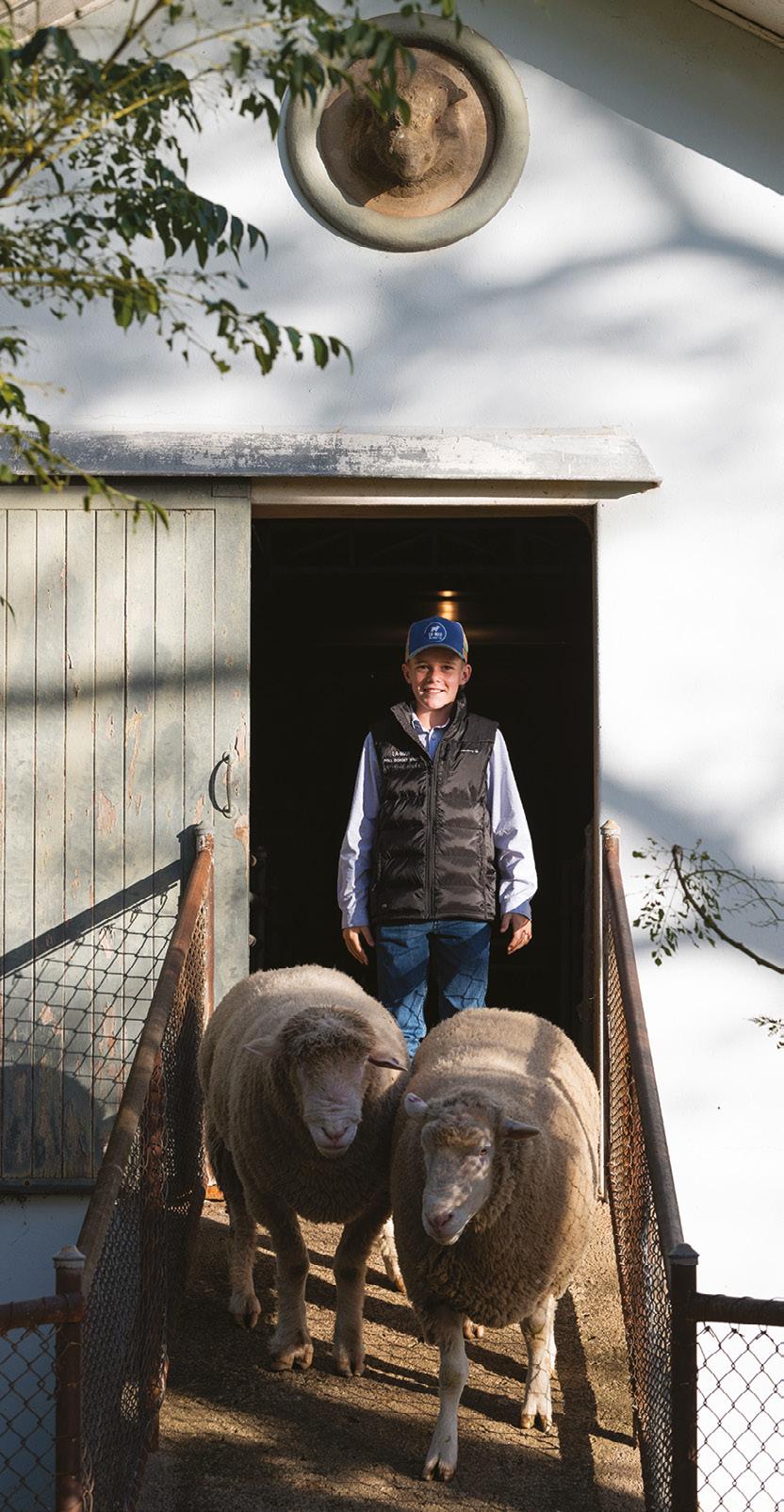


The Gartlee Poll Dorset stud was sold by grandfather Laurie (with Sam, above left), but the Poll Dorset bloodlines were then bought ‘back’ from Gartlee by grandson Sam (above, and far left pictured with his dad). The ‘Mar’ in the stud’s name references his grandmother, Marie (pictured top left with his mother, Marita).

Definitely a lover, not a fighter, Woody rules the roost over in Warren, in the central west.
EDITED BY JAC TAYLORWHAT IS YOUR WORST HABIT? Going left when I should be going right. I also tend to chase pigs when I come across them in the paddock – though I should leave that job to the pig dogs.
WHAT IS YOUR FAVOURITE FOOD? Fresh kangaroo leg, marinated with goanna fat.
IF YOU BECAME FAMOUS FOR ONE THING, WHAT WOULD IT BE? I wouldn’t mind going into politics. Some change needs to be enacted out here to control the amount of cats I’m seeing. It’s making me go mad!
IS THERE SOMETHING THAT DRIVES YOUR PARENTS MAD?
They don’t like my practical jokes. Sometimes I’ll pretend I can’t hear what they’re saying – it sure gets a big reaction from him. Usually a lot of shouting and arms waving.
IF YOU COULD HAVE ANOTHER ANIMAL AS A FRIEND, WHAT WOULD IT BE AND WHY? Probably a wedge-tailed eagle. They’d be a handy set of eyes when I’m mustering the big paddocks.
FAVOURITE TOY OR THING TO PLAY WITH? A brand new pair of leather work boots.
REAL NAME AND NICKNAMES: ‘Woody’ – that’s pretty much it.
WHERE DO YOU LIVE AND WHO DO YOU LIVE WITH?
Warren in central western NSW, with my people.
WHAT IS YOUR FAVOURITE THING TO DO ON THE FARM? Mustering sheep, cattle and goats.
HAVE YOU EVER DONE SOMETHING REALLY NAUGHTY? TELL US ABOUT IT. I may have had an intimate night with one of the neighbours.
WHAT DOES EVERYONE LOVE ABOUT YOU? I’m always keen to go to work, rain, hail or shine, even on public holidays.
ANY LAST WORDS?
If you want something said, ask a Dachshund; If you want something done, ask a Kelpie.

Created in the drought of 2019 to help rural communities with some online cashflow, Buy From The Bush (buyfromthebush.com.au) continues to bring internet shoppers together with small bush businesses selling quality, homemade products. Here, we look at some beauties from NSW makers and sellers.
The ‘Ultimate’ fire pit (585x485x380mm) is heavy duty but portable, solidly made from 5mm Australian steel by TimberWolf Fires in Kelso. Designed with strategic vents and folds, it puts out almost three times more radiant heat than 3mm fire pits, yet comes flat packed, reputedly built in one minute. $399
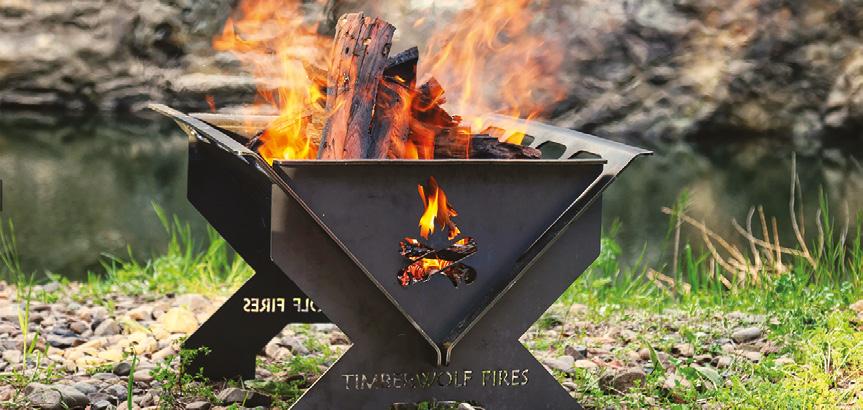
Turning her original pencil drawings into a range of home and kitchen wares in the Gundagai area, Cathy Hamilton Artworks brings the essence of farm life indoors. This sheep print can be purchased as a notepad, a tea towel, all the way up to a large stretched canvas artwork mounted on timber. $140

Morella Grove are a 2nd- and 3rd-generation father-and-daughter team, based in Griffith. Their various gift packs combine their signature, family-grown extra virgin olive oil and caramelised balsamic vinegar with homemade relishes and jams, accessorised with organic cotton tablecloths and tea towels, camphor laurel grazing boards and more. $70-145

The organic, raw and hand-poured chocolate treats from Tamworth’s Deva Cacao hit the news in Easter 2020 when Buy From The Bush sent through more orders in 48 hours than in the three years prior! These native bird pops are made from 78% cacao and sweetened only with raw bush honey. $17.95

Like all Peggy & Twig’s wellknown freshwater and keshi pearl earrings, these 14k gold hoop and removable freshwater pearl drop ‘Rosa’ earrings are designed and made on a mixed farming property near Trangie by former school teacher Emily Quigley. $110

Each Snowy’s hat pin is made to order by Featherdale Earrings in the Central Tablelands. Feathers include Pearl Guineafowl, Bronzewing Turkey and Silver Pheasant, Blonde Rooster and Brahma feathers, and are ethically collected from licensed native bird owners only, from natural moulting, and are finished with a freshwater pearl. $60

Perennialle Plants is a destination nursery and emporium on Canowindra’s main street, stocking not only gardening goods but a unique range of rare, frost and dry tolerant plants available by mail order, and quirky pieces for home like this vibrant bird feeder or nesting box. $149.95
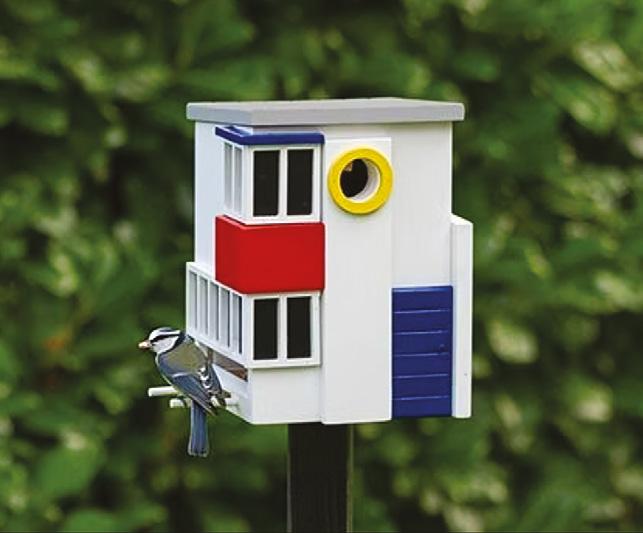
Farming champions don’t come any louder and prouder than beef producer Selby Green. The third-generation farmer has been the voice of sustainable agriculture for three decades in the Hunter Valley region amid increasing pressure from urban development and mining. Alongside wife Gloria, Selby has also achieved the rare feat of retaining a family farming legacy in the Millers Forest area.

HOW DID YOU GET INTO FARMING AND AGRICULTURE?
It was a natural progression from my father and grandfather. My dad established a dairy farm and was quite progressive at the time in purchasing land to run cattle on. Our son is well into it too, and he is training up his two boys to take over from him. Our daughter is now based on the home farm where Dad’s dairy was, and Gloria and I have a 100-acre farm producing beef, silage and hay.
WHAT DO YOU LOVE ABOUT FARMING AND AGRICULTURE?
Being able to produce quality food in a sustainable manner, while caring for the environment. We produce good food from healthy fat cattle for consumers while having an active part in ensuring we are headed in the right direction for farm sustainability.

WHAT DOES YOUR FARM PRODUCE?
Beef from healthy fat cattle, hay and silage. The cattle herd is predominately Angus, with some crossbreeding using a South Devon bull and some Charolais. Clover and rye grass silage is our speciality. It is sold locally
or kept on farm for drought insurance. We also have beautiful lines of shade trees that we have worked on for 30 years.
WHAT DO YOU THINK IS THE BIGGEST THING TO HAVE HAPPENED IN FARMING IN THE LAST 10 YEARS?
The advances in tractor and machinery technology have been amazing. We made the decision years ago to have all our own equipment so that we could get fodder crops off when we needed to, and the new equipment that is available has really made many of the hard tasks simple.
My father was a big influence. Gloria has also been a champion and is heavily involved in supporting the community. That includes the Millers Forest Progress Association, which has been running for 140 years. Gloria does a newsletter to 178 households as part of Rural Watch, keeping everyone informed about local crime, lost pets and livestock – an amazing woman who also does all the farm finances. I also get some
NSW Farmers Branch: Hunter
Farm: Lidney Farms, Millers Forest
NSW Farmers Branch: Hunter
Years as a Member: 27
inspiration from various community groups I am involved in, as well as working with government organisations like the Local Land Services and the DPI.
WHY ARE YOU A NSW FARMERS MEMBER?
All farmers need to be a member to give the Association the strongest possible voice and advocacy, otherwise you’re just a voice in the wilderness. There are so many issues that NSW Farmers is working on, that are not publicised very well – like ridiculous property valuations, and the complex issue of water management. Issues with the native vegetation Act is another case in point, and I thank NSW Farmers staff for representing farmers like me and helping to keep us in the farming business.
WHAT DO YOU DO WHEN YOU’RE OFF FARM? Fishing the big blue ocean.
WHAT IS YOUR FAVOURITE SECTION OF THE FARMER MAGAZINE?
It would have to the farm dog telling their side of the story. If they could talk, the stories wouldn’t be much different! l
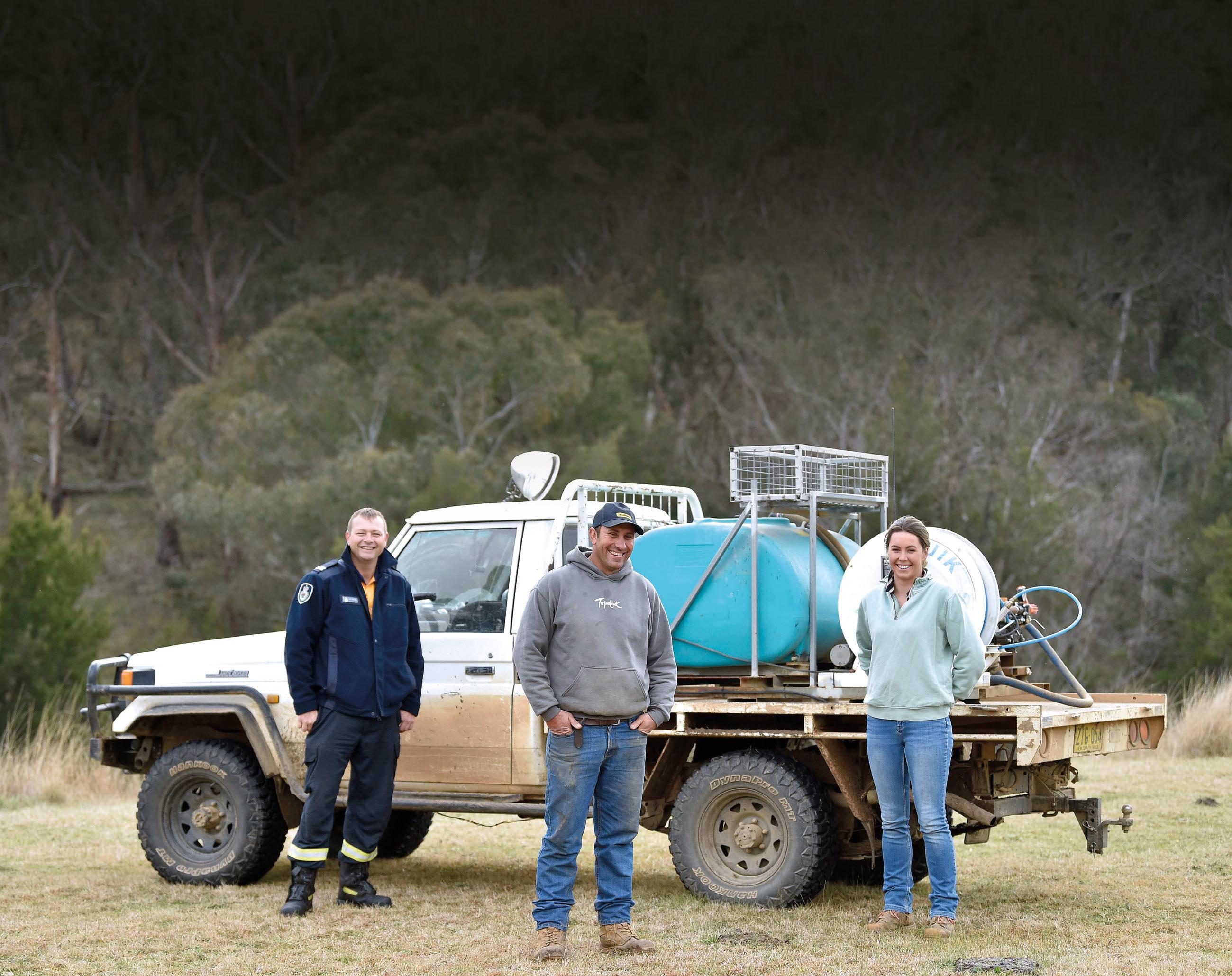




FULL PRODUCER MEMBER $438.90 For those who own or manage 1 VOTE PER MEMBERSHIP a farm. Includes our basic workplace relations package which provides:

· Collective representation on awards, minimum wage review, workers compensation.
· Wage information, including wage guides issued annually.
· Phone advice, four calls a year.
ESSENTIALS WORKPLACE RELATIONS PACKAGE
Members can upgrade to this package to receive:
· Unlimited advice on employment matters.
· Assistance in negotiating with the Fair Work Ombudsman’s office.
· Representation in employment matters handled by tribunals, such as Fair Work Australia.
ADDITIONAL MEMBER $100
Linked to a full producer, with a 1 VOTE PER MEMBERSHIP proprietorial or income interest.
· Assistance with drafting and reviewing employment-related correspondence, policies and procedures, and employment agreements.
SECOND VOTE MEMBER $100
Linked to a full producer, most 1 VOTE PER MEMBERSHIP often a family member.
SMALL FARMS MEMBER $150 Have a small holding and do not receive majority of income from it.

ASSOCIATE MEMBER $100
COUNTRY CONNECTION $100
Do not own a farm, e.g. teachers, agronomists, business people.
Supporters of farms from the city.
RETIRED MEMBER $100 For retired farmers
The Essentials Workplace Relations package fees start from $165 for up to two employees. Extra charges may apply for assistance required within your first four months of membership. All prices include GST.
794 000.

FOR ALL GENERAL ENQUIRIES Contact the Member Service Centre on 1300 794 000 or your local regional services manager:
NORTHERN Michael Collins, 0439 958 163, collinsm@nswfarmers.org.au
NORTH COAST & TABLELANDS Mark Bulley, 0429 330 348, bulleym@nswfarmers.org.au
TABLELANDS & SOUTH WEST SLOPES Catriona McAuliffe, 0488 100 005, mcauliffec@nswfarmers.org.au
MIA WEST RIVERINA & LACHLAN Frank Galluzzo, 0427 773 495, galluzzof@nswfarmers.org.au
EAST RIVERINA & SOUTH COAST Daniel Brear, 0487 248 731, breard@nswfarmers.org.au
WESTERN DIVISION & ORANA Caron Chester, 0400 116 207, chesterc@nswfarmers.org.au
HUNTER & SYDNEY BASIN Tanya Hayes, 0407 533 218, hayest@nswfarmers.org.au
MEMBERSHIP & COMMERCIAL Andrew Coughlan, 0477 393 092, coughlana@nswfarmers.org.au

YES, I WOULD LIKE TO JOIN NSW FARMERS. I HAVE TICKED MY MEMBERSHIP CHOICE ABOVE. PLEASE CONTACT ME.

NAME: ADDRESS: EMAIL: PHONE: COMMODITY (IF APPROPRIATE):
MEMBERSHIP SERVICE
MANAGER
Alicia Harrison, 0429 817 611 harrisona@nswfarmers.org.au
Help protect your livelihood. NSW Farmers is your voice – we are only as strong as you make us. The greater our numbers; the greater our voice.
Use your voice, become a member at nswfarmers.org.au or call 1300
include The Farmer magazine delivere d to you.
Offering NSW Farmers 10% lifetime discount on Life Insurance.*





WFI-insured? Eligible for rebate reducing NSW Farmers membership cost.




Verified Lending offers 2% discount on rate fee and $150 fuel voucher per deal.


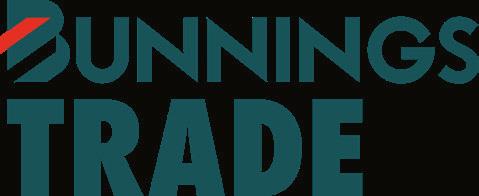


These are just some of the incredible savings available to our members, scan here to find out more and take advantage.


A
NSW Farmers Vice President
Rebecca Reardon addresses the crowd at the NSW/ACT awards in May (below left), and joins other sponsors, finalists and the winner Michelle Leonard (in the centre, below right).

There are plenty of ways to capture the spirit of a community; after 18 years doing this through song, Michelle Leonard OAM was overjoyed to receive the AgriFutures Rural Women’s Award.
Words JAC TAYLORBorn and bred in Coonamble, Michelle has taken out the top honours for her work founding and directing her regional choir organisation Moorambilla Voices, and now goes on as the NSW/ACT finalist in the nationwide finals, to be announced at a Gala dinner on 12 September.
“My formative years were spent practising, dreaming and being creative (and often day dreaming looking at the clouds) on my father’s property ‘Moorambilla’,” says Michelle.
“Dad just turned 101 and thinks Coonamble is the most magnificent place on earth – I absolutely feel calmer and connected to the black plains country!
“However, after 18 years on the road delivering workshops – this year my total has gone to 42,000 kids – every community has people and places of incredible beauty.”
“I grew up in a community and family that had live music happening constantly,” she continues. “By the time I’d finished my tertiary studies at the Sydney Conservatorium that ecosystem has all but disappeared. Moorambilla was my way of trying

to use the skills and talents I had to help the communities I love to have the same opportunities the city kids had. Little did I realise it would eventually become one of the most artistically satisfying and innovative things I could imagine.”
Moorambilla Voices is a project that has a reach far beyond its original remit as a choir, including online learning opportunities, yearly residency camps, tours and concerts, and working with known community leaders who can help inspire and lead local children.
It has been the subject of a documentary on Netflix, Wide Open Sky, depicting just a few of the kids (age 8-18) involved in the music program benefiting from what Michelle describes as “multi-artform learning, deeply connected to language, world view and country”.
“The resilience, capacity and commitment of our alumni is inspiring,” says Michelle. “Almost all have taken on leadership roles in their schools, communities as changemakers. They are utterly remarkable.”
The NSW/ACT AgriFutures Rural Women’s Award is supported

this year by Platinum sponsor Westpac, and by State sponsors NSW Farmers, the NSW government, and the Country Women’s Association of NSW.
“It was wonderful to have the NSW Farmers acknowledge the work we’ve been doing across all the 21 LGAs we work in,” she says. “So many of our children are connected through their families, their future work and their aspirations to NSW Farmers, it is just such a logical thing for both organisations to work together – we want rural communities to thrive, and we both play an important part in that.”
The $15,000 grant money will contribute towards the project’s touring fund, with 48 members of Moorambilla Voices’ high school ensemble performing at the Sydney Opera House, “singing pieces showcasing the landscape, language and world view of communities from Collerenibri, Lightning Ridge and Narran lakes, Cobar and Mt Grenfell, the Macquarie Marshes and our magnificent river systems”. l
Prime Pod by Wild Modular is more than a building; it's an innovative solution for income diversification and resilience in farming With our modular buildings, delve into agritourism and improve key worker accommodation, forging a path towards a more sustainable future


With our efficient 6-week delivery, your operation will be up and running in no time, streamlining your transition and fast-tracking your progress
PRICED STARTING FROM $140K
COMES COMPLETE READY TO OCCUPY
SCAN WITH YOUR PHONE CAMERA FOR MORE INFORMATION

